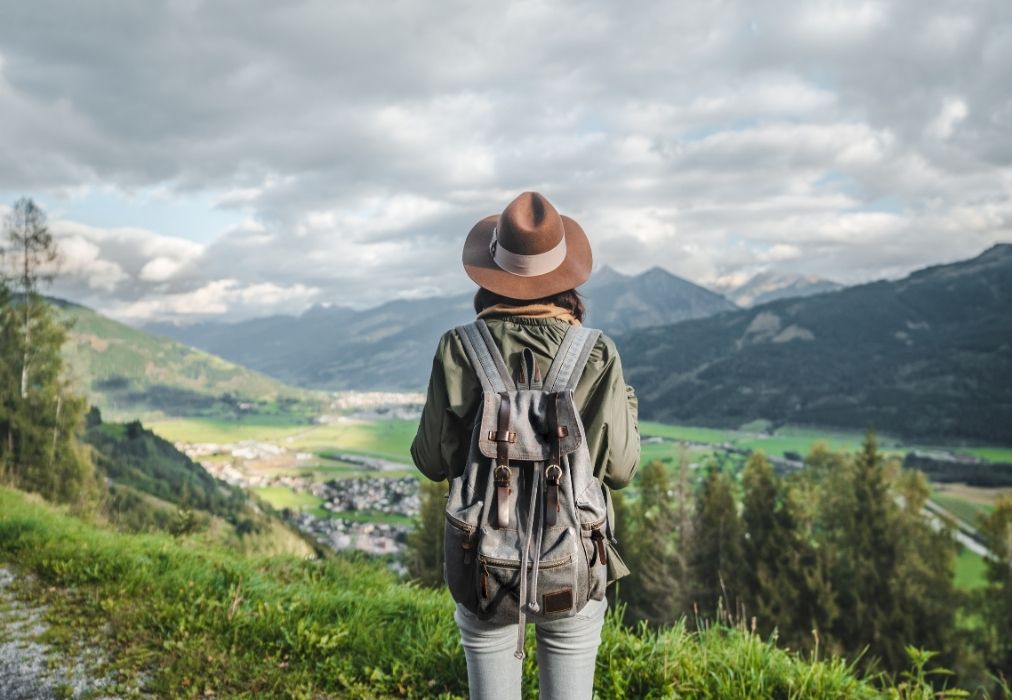Are you traveling to Austria on our Christmas markets tour? Looking for everything you’ll possibly need to know about visiting Austria solo as a woman?
In this article you will find a brief history of the country, tips for the best time to visit, travel essentials and entry requirements, health and safety advice, a list of the best places to see, and some local culture, from basic Austrian-German vocab to the best foods and drinks to try.
Lastly, understand and immerse yourself in some Austrian history and culture with our reading list, movies and shows to watch.
Looking for what to pack? You can find our Central European packing list here.
Brief history of Austria
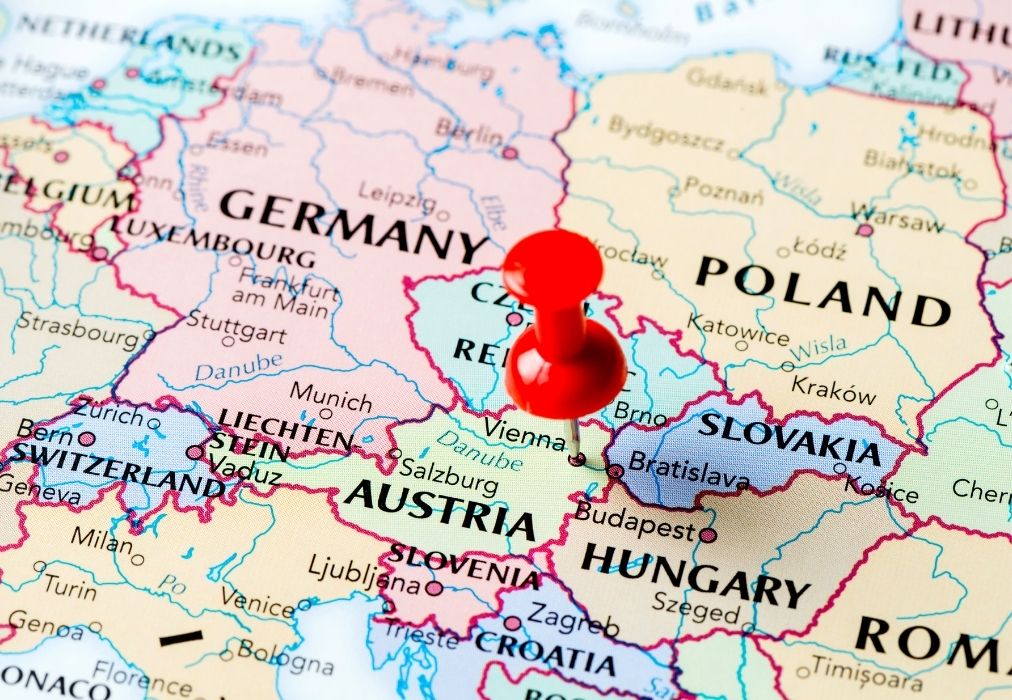
Before we get started and before you travel to Austria, it’s incredibly important to understand Austria’s history. If you’d rather go straight to the travel tips for Austria, click here.
Notable Austrian history begins around 400 BC when Celtic and Nordic peoples began to migrate to the areas of present day Germany and Austria along the Danube and Alpine Valleys.
The Kingdom of Noricum, a Celtic state that developed in 200 BC, quickly became part of and thrived within the Roman Empire for its iron and “Noric Steel”.
The Romans continued to dominate and develop, building roads and cities like Vandebona (to become Vienna) and Hallstatt, which became a hub of craftsmanship, social hierarchy, materialism and trade (mostly salt), and the birthplace of its namesake culture, “the Hallstatt period” (750-450 BC).
The fort settlement of Carnentum became the central defense for the Roman’s along the Danube, and its Archeological Park can still be explored today.
By 200 AD, German tribes began expanding, becoming a force to be reckoned with for the Romans. By 500 AD, Alamanni and Bavarian tribes had gained control over the western Alps and the Wienerwald (Vienna Woods) region, while Slavic tribes also infiltrated from the east.
When Germany’s King of Franks, Charlemagne, eventually established a territory along the Danube Valley around 800 AD, Austria was officially becoming its namesake “Österreich” (Eastern Realm) within the Holy Roman Empire.
Under the rule of the House of Babenberg (10th-13th centuries) and the House of Habsburgs (15th-20th centuries), Austria established itself as a powerful European empire, with the Babenbergs laying the groundwork to make Vienna the key hub of music, architecture and philosophy that it is today, while the Habsburgs’ continued to expand the Austrian territory through marriage, strategic alliances and war.
Through these expansions, the Habsburgs acquired the Netherlands, Hungary, and Spain and its territories in the Americas, taking over Mexico and Peru by marriage. Its control over Spain ended in 1700 with the death of Charles II without any descendents.
The Habsburg Monarchy also played key roles in some of history’s biggest events, like Protestant Reformation, the Thirty Years’ War, and held the Congress of Vienna in the early 1800s to reestablish order and stability to Europe after Napoleon’s defeat against Austria in the War of the Third Coalition (1803-1806) and his European crusades.
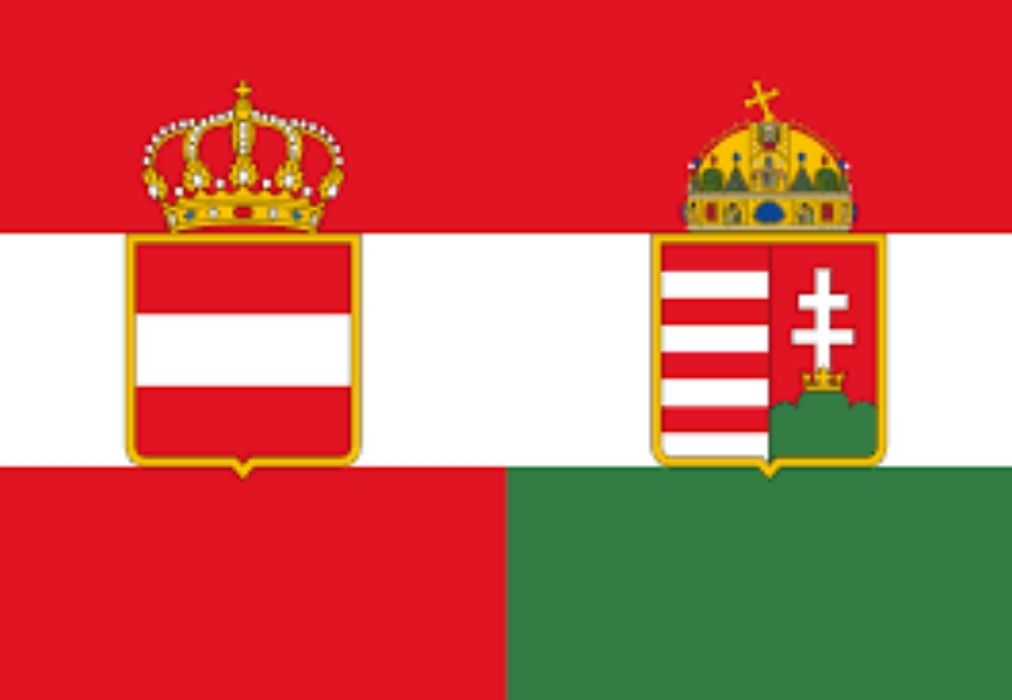
In 1867, Austria and Hungary came together, forming a dual-monarchy under Franz Joseph I, rapidly modernizing and industrializing the nation, and attempting to establish a national identity due to growing tensions between its Hungarian, Slovak, German, Czech and Polish populations.
Because of the diversity of its population, Austria-Hungary wanted control over the Balkans to quell its nationalist movements, balance the impending power of Russia, and manage trade routes to the Adriatic Sea.
But after the Congress of Berlin in 1878, several Balkan states gained independence, including Serbia. In the Congress, Austria was promised to acquire Bosnia and Herzegovina, and in 1908, Austro-Hungary did just that.
Serbia was not pleased to hear that Bosnia was annexed, and the news sparked uproar in Balkan populations across Europe, resulting in Bosnian-Serb Gavrilo Princip fatally shooting killing Austrian Archduke Franz Ferdinand (Franz Joseph I’s nephew) and his wife Sophie in Sarajevo.
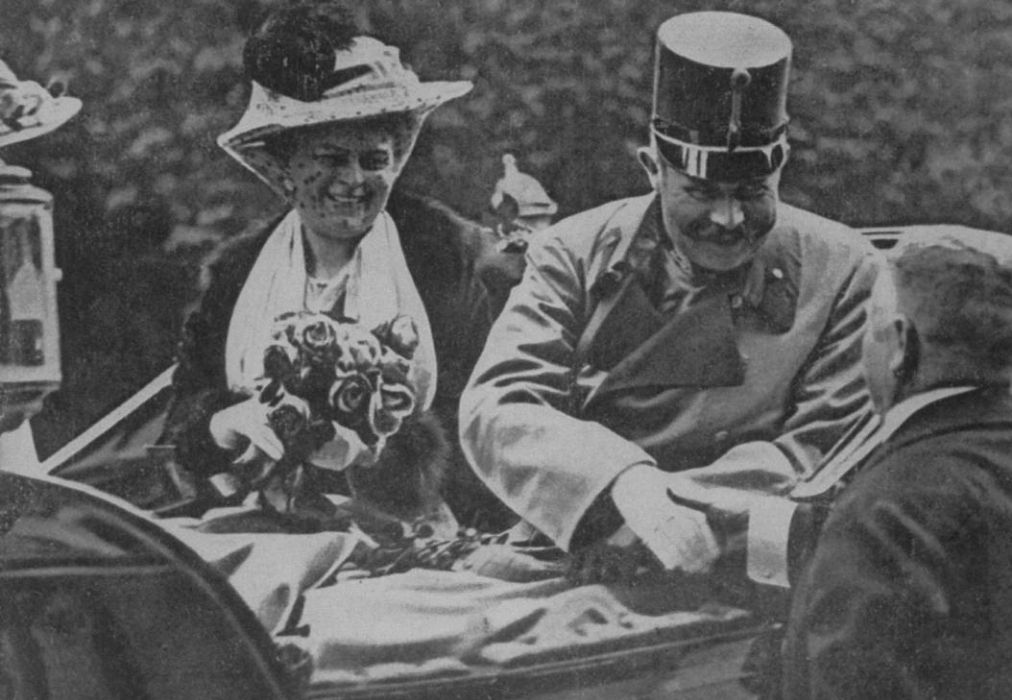
This event, believed to have been the doing of Serbian intelligence by the Austro-Hungarian officials, became the beginning of World War I, and Austria declared war on Serbia on July 28, 1914.
After four years of violence, and around 20 million deaths, Austria had officially lost the war, and the Austria-Hungarian Empire collapsed along with it.
The Treaty of Saint-Germain in 1919 saw to the restriction of Austria’s military forces, imposed territory losses, and restricted Austria from unification with Germany due to their detrimental alliance during the war.
As a Republic, the next 30 years saw Austria struggle to manage its political and economic stability, with inflation, unemployment and poverty growing by the day, resulting in the population’s desire for “Anschluss” or unification with Germany, as a means to the end of their problems and a glimmer of hope.
In 1938, it finally happened and Austria was annexed by Nazi Germany, becoming a part of the Third Reich – but it wasn’t the outcome they had hoped for.
Under control of the Nazi regime, Austria lost its independence and autonomy, and saw its Jewish population repressed, discriminated against, and deported to concentration camps across Europe.
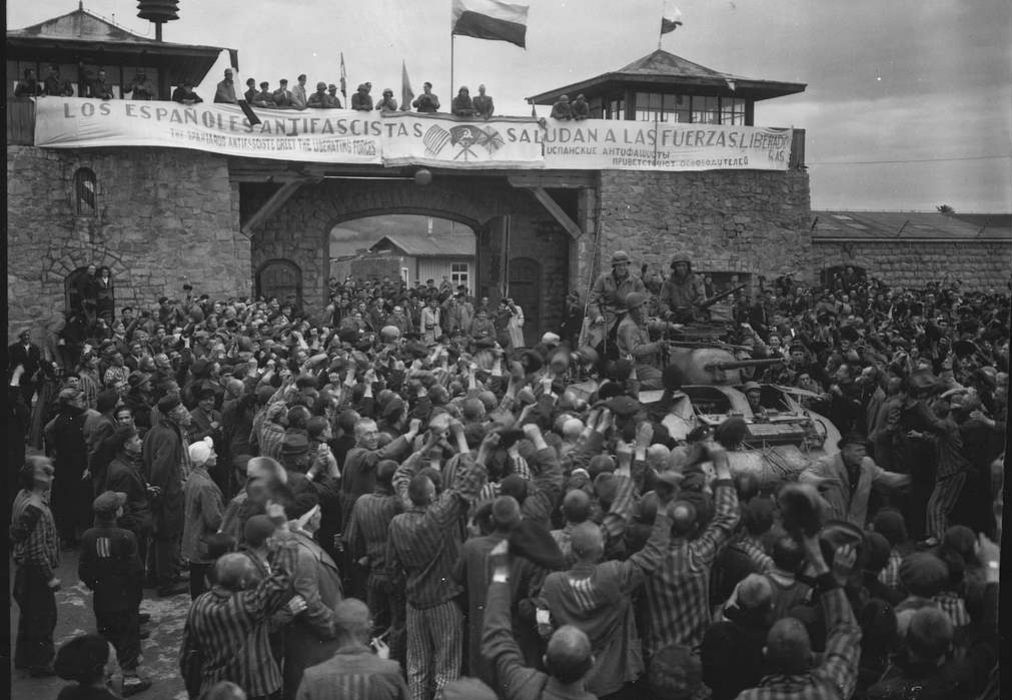
Austria hosted around 90 concentration camps and sub camps at this time, with the most significant one being the Mauthausen Main Camp and its Gusen sub camps.
At least 190,000 people were imprisoned in the Mauthausen-Gusen concentration camps and subcamps over seven years, and at least 90,000 died. Approximately 65,000 Austrian Jews were killed during the Holocaust.
Globally, the Second World War caused the death of approximately 75 million people with battles across continents from Europe to Asia and the Pacific.
After the war, like Germany, Austria became occupied by the Allies, with the United States, the Soviet Union, the United Kingdom and France dividing the country into four zones. Austria spent 10 long years rebuilding its infrastructure, economy and political standings.
Under the presidency of Theodor Körner, and with Chancellor Julius Raab, Austria gained sovereignty once more in 1955 with the signing of the Austrian State Treaty, declaring permanent neutrality and establishing a stable democratic government.
Austria joined the European Union in 1995, playing an active role in European and international affairs, and is a country with one of the highest qualities of life, with a strong economy and rich cultural heritage.
From musicians and composers like Mozart and Beethoven, to actors like Schwarnzenegger or revolutionary psychologists such as Freud, Austria has contributed its fair share of influential figures, and it’s no wonder around 30 million people visit this country every year to see what it’s all about.
Quick facts about Austria
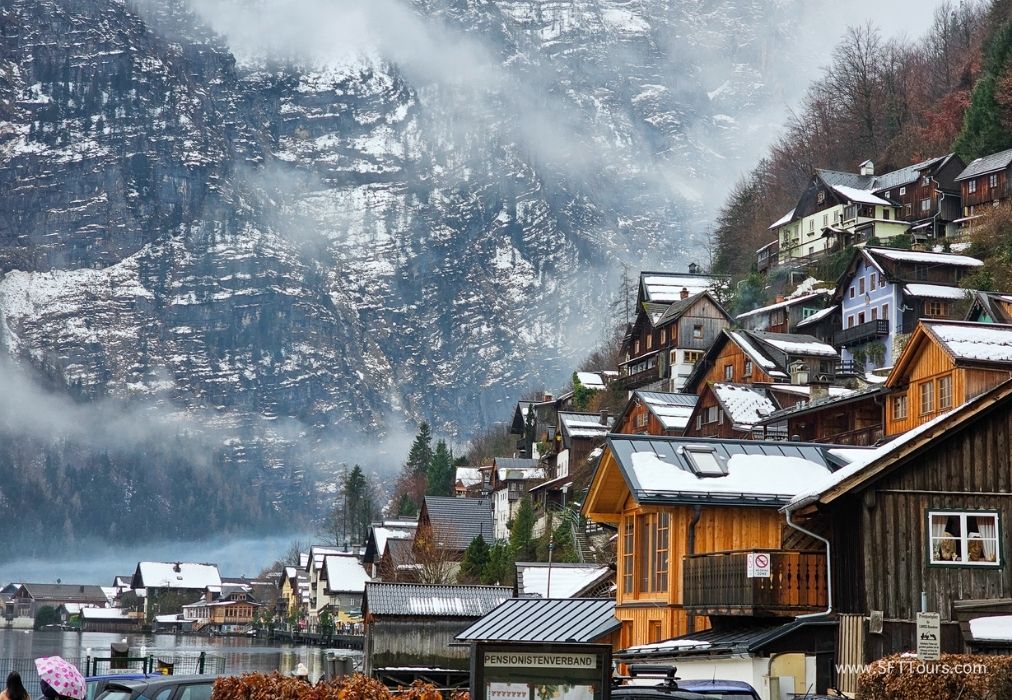
With Austria’s history behind us, here are a few fun and interesting facts about this country:
- Austria created the Croissant, not the French! Originally called a “kipferl”, the concept of a croissant dates back to the 13th century and didn’t become popular as a croissant until Austrian August Zang opened a Viennese bakery in the 1830s.
- Roughly one quarter of the population of Austria lives in Vienna. With Austria’s population of 9 million people in 2024, Vienna is home to nearly 2 million of those citizens.
- Austria is a home for the world’s largest ice cave. Located in Werfen and spanning almost 42 kilometers, Eisriesenwelt is open to the public from May to October for visitors to explore its frozen waterfalls and formations.
- 63% of waste is recycled in Austria. Austrians have a deep culture of environmental respect and awareness, and it shows in their meticulous waste separation practices that put Austria as the second leading country in Europe, right behind Germany for their recycling practices.
- The very first postcard was written in Austria, where the “Correspondenz Karte” was sent from Linz to Kirchdorf in 1869. After only 3 months, 3 million cards were sold.
- More than 62% of Austria is covered in the Alps, and Austrians and visitors alike take advantage of this, boasting some of the world’s best ski resorts, natural wonders and wildlife, and even some amazing spa and wellness resorts.
- St. Peter Stiftskeller in Salzburg is the world’s oldest restaurant still in operation today. Opened in 803, it is rumored that people from Christopher Columbus to Mozart have dined here. We have lunch here during our Christmas markets tour.
- Austria is home to a rich coffee culture after the Turks retreated from Vienna in 1683, leaving behind tons of coffee beans. Since then, Kaffeehaus culture has brought Austrians together for coffee and conversation across the country.
- Though Paris’ catacombs system is the most famous underground network of tunnels, Vienna also hosts an underground city that dates back to the Middle Ages.
- The town of Hallstatt is so beautiful, that a full-scale replica was built in the city of Huizhou, Guangdong, China in 2012. It is also believed to be the inspiration for the fictional kingdom of Arendelle in Disney’s Frozen.
- Austria is a neutral state just like Switzerland, since 1955, at the end of WWII, when it declared permanent neutrality and has since not joined any military alliances. However, it actively participates in the European Union.
- Many famous celebrities, scientists and artists are from Austria. This includes American actor and California Governor Arnold Schwarzenegger, Mozart, Freud, or the energy drink company Redbull.
- Vienna consistently ranks among the top cities in the world for quality of life. Its clean environment, efficient public transport, and rich cultural scene make it a great place to live. The Economist Intelligence Unit also ranks it highly for its livability.
Austria travel tips
In this section we want to share general Austrian travel tips to help you plan your trip:
When to visit
The best time to visit Austria depends on your preferences for weather, activities, and crowd levels but summertime sees the highest amounts of visitors as winters are long and bitterly cold throughout the country.
Here’s a breakdown of the different seasons:
Shoulder Season – Spring (March to May) and Autumn (September to November)
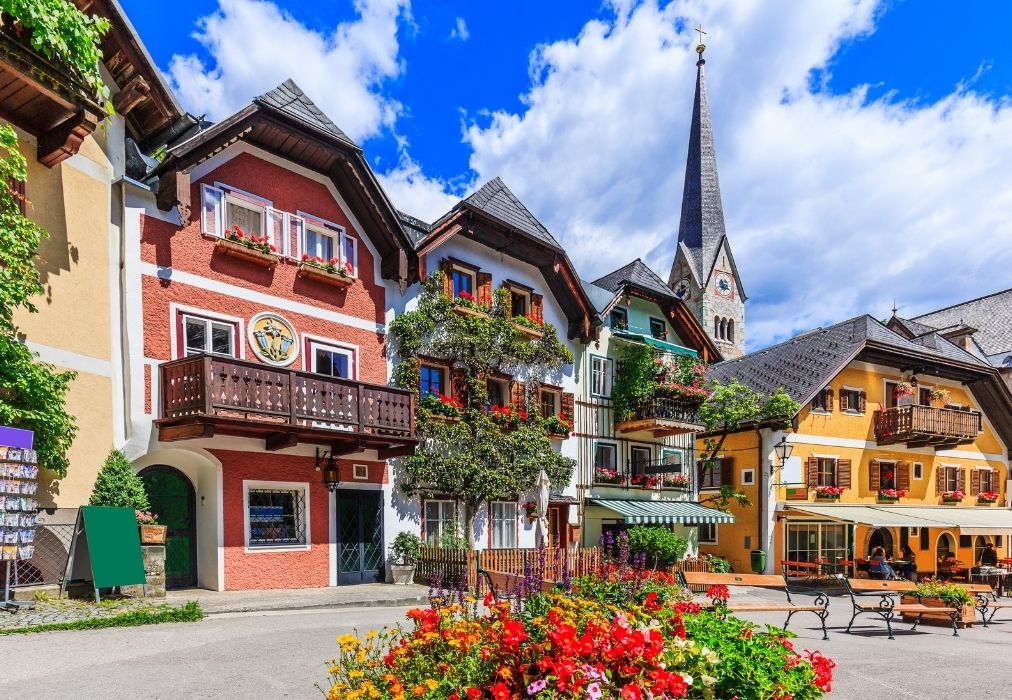
Shoulder seasons in Austria are a great time to visit, and May and September are ideal times to visit to miss the summer crowds, and have an easier time booking hotels, activities and transportation. However, you need to be prepared for unpredictable weather.
Temperatures can range from -1 C in the alpine regions in March all the way to 20 C in Vienna in May, so it’s important to pack accordingly on your trip.
You’ll still catch some snow in Innsbruck and the alpine regions in March and November, and a higher chance of rain all year in this region due to its elevation in the alps. Otherwise, the chances of rain are relatively low across the northern and southern parts of the country at just over 6 days of rain per month.
What makes this a perfect time to visit Austria, is the sun still shines for around 12 hours a day, giving you lots of time to enjoy the end of Austria’s ski season, and the start of its hiking and cycling season – if you’re the outdoorsy type.
Spring and fall are great times to visit to enjoy some of the festivals and celebration:
- Osterfestspiele Salzburg (Salzburg Easter Festival): Easter time in Salzburg sees some of the most amazing talent in the world of drama, opera and classical orchestra ring in Spring with some beautiful and inspiring performances in this gorgeous city.
- Viennale (Vienna International Film Festival): Showcasing, honoring and awarding the year’s international and Austrian-made films, this is one of Austria’s most important festivals held every October.
- Wienerwald Weinlesefest (Vienna Woods Wine Harvest Festival): If you like wine, then this one’s for you! This festival celebrates the grape harvest season in one of Austria’s wine regions, the Vienna Woods. Indulge in some local tastings, or better yet, go on one of this region’s iconic hiking and wine events where you’re taken on a beautiful hike through the Vienna Woods, with stops along the way at local vineyards and taverns!
Summer (June to August)
Summer in Austria is where tourism reaches a peak. The weather is warm, the days are long, and rain stays low in the non-alpine regions of the country.
However, due to the elevation of the Austrian Alps, the weather can vary quite drastically between the alpine and non-alpine regions. Innsbruck, in the south-west, sees a much rainier climate than what is experienced in places like Vienna or Salzburg which are further north.
Summer (Sommer) is a great time to take advantage of all of the outdoorsy activities this country has to offer such as hiking, biking, swimming, boating, and relaxing in the park.
Summertime sees various festivals and celebrations:
- Salzburger Festspiele (Salzburg Festival): Labeled as one of Europe’s most prestigious cultural events, this world-renowned festival features classical concerts, opera performances and dramatic plays and is held in late July through early August.
- Vienna Philharmonic Summer Concerts: Throughout the summer months in Vienna, the incredibly talented Vienna Philharmonic Orchestra plays some free, open-air concerts at the Schönbrunn Palace Gardens as well as the City Hall Square.
- Donauinselfest (Danube Island Festival): Every year in June, millions of people flock to Vienna’s Danube Island to experience the free music festival which has hosted people like Lenny Kravitz, DJ Robin Shultz, and Scottish singer-songwriter Amy MacDonald.
Winter (December to February)

In the grand scheme of things, Austria experiences milder winters than some of its neighboring countries.
Average low temperatures are around -6 C in the Alps and it will normally be around 5 C in February throughout the whole country.
Big cities like Vienna and Graz experience just under 60mm of snow per month from December to February, while Innsbruck and the Alps see more than double, at 150mm of snow per month come winter time.
This means that if you are traveling to Austria during the winter and you are not used to the cold, you have to be prepared for low temperatures.
Austrians love to get outside no matter the time of year or the temperature, and early winter boasts quite the spectacle of Christmas lights, ice skating and markets, so it’s very important to pack for the occasion.
Here’s a few key winter festivals and celebrations in Vienna:
- Iconic Christmas Markets: Vienna hosts some of the world’s most famous Christmas markets beginning in late November, throughout December every year. Visit the legendary Rathausplatz Christkindlmarkt, Belvedere Christmas Market, and the Spittelberg Christmas Market while you’re in Vienna to christen the holiday season!
- Vienna’s New Year’s Concert: Held annually on New Year’s Day, the world-famous Vienna Philharmonic Orchestra puts on quite the show, broadcasted to millions worldwide.
- Vienna Ball Season: With Austria being the birthplace of the waltz, it’s no surprise that the country’s formal and elegant culture continues to be celebrated annually during the ball season in January and February. Guests get to pull out their best gowns and tailcoats in some of the city’s most stunning venues, like the Hofburg Palace.
Public Holidays
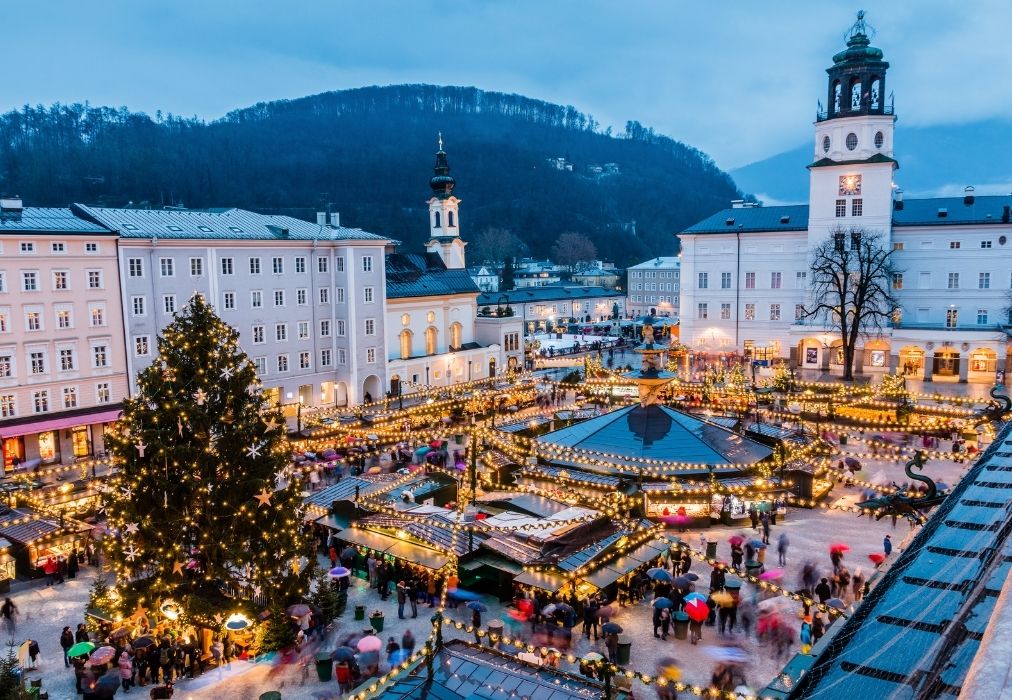
There are 13 public holidays in Austria, and it is important to note that Austria is very strict on their holidays and the majority of shops, even essential services, will close every Sunday and on all public holidays.
If you plan on traveling over the public holiday or on Sundays, plan for everything you will need in advance, and spend the day like a local would, relaxing, spending time with family and friends, and going to church (optional, of course).
Here’s a list of public holidays to keep an eye out for while planning your trip to Austria:
- New Year’s Day (Neujahrstag): January 1
- Epiphany (Heilige Drei Könige): January 6
- Easter Monday (Ostermontag): Monday after Easter Sunday (date varies each year)
- Labor Day (Staatsfeiertag): May 1
- Ascension Day (Christi Himmelfahrt): 40 days after Easter (date varies each year)
- Whit Monday (Pfingstmontag): 50 days after Easter (date varies each year)
- Corpus Christi (Fronleichnam): 60 days after Easter (date varies each year)
- Assumption of Mary (Mariä Himmelfahrt): August 15
- National Day (Nationalfeiertag): October 26
- All Saints’ Day (Allerheiligen): November 1
- Immaculate Conception (Mariä Empfängnis): December 8
- Christmas Eve (Heiligabend): December 24
- Christmas Day (Christtag/Erster Weihnachtstag): December 25
- St. Stephen’s Day (Stefanitag/Zweiter Weihnachtstag): December 26
Passport and visa requirements
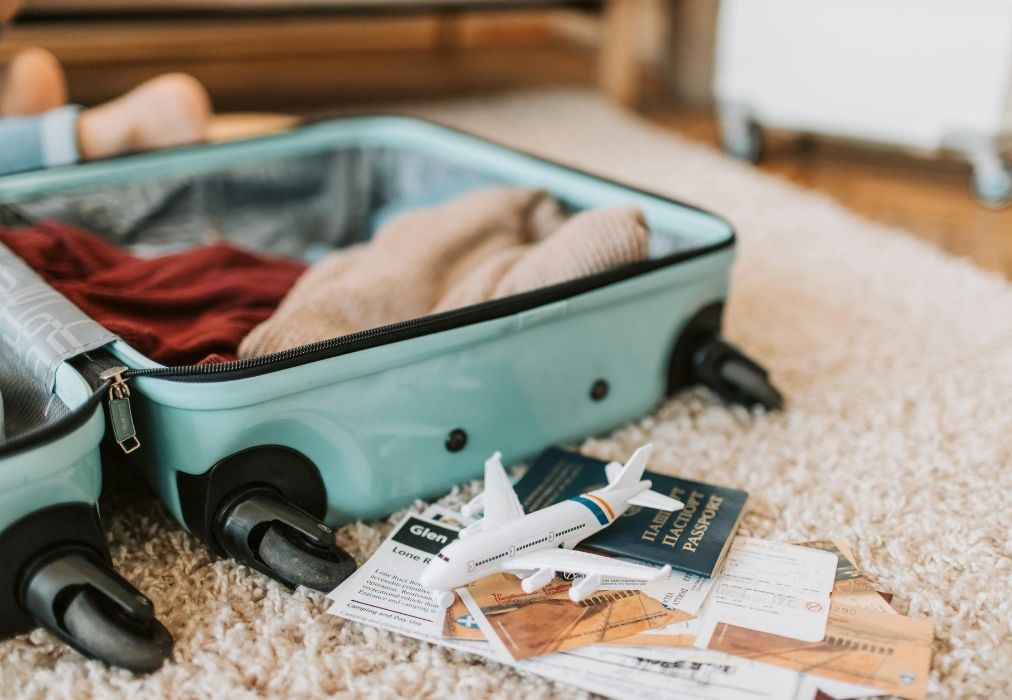
Austria joined the European Union in 1995, and is part of the free movement of people and goods called the Schengen Zone.
If you are a citizen of a non-Schengen country without a visa-free travel agreement with the area you need a Schengen visa. You should apply for it at the embassy of the country you plan to first enter the zone through. Your Schengen visa is typically valid for up to 90 days of travel within the zone in a 180 days period.
Schengen Visa: While the general process is similar for all countries within the Schengen zone, the requirements do change and can take weeks to process so allow enough time for this. If you are unsure about the visa application process for Austria, check out this resource for more information, or you can use a service such as iVisa to do it for you.
Passport Validity: Your passport needs to be valid for at least 3 months after departure from the Schengen area and we recommend it has at least 2 empty pages.
Health and safety
Nobody wants to get sick when on vacation but, if the worst is to happen, it pays to be prepared.
Bring all the medication you’ll need: During your trip to Austria, you will usually not be too far from an urban center, a doctor, a hospital and a pharmacy unless you plan to spend time hiking or offroad, but it is strongly recommended to bring any prescription medication you may need and enough of it to last you the entire trip.
Your specific medication may not exist in Austria, or it may require a prescription you need to see a doctor for, save time and hassle by bringing everything you may need with you. Review what you should bring in your first aid kit here.
IMPORTANT: Make sure any prescription medication comes in its original pharmacy packaging, and with the corresponding doctors note and prescription to avoid issues at the border. It is your responsibility to check that whatever medication you bring can indeed be taken into Austria. What may be legal in your country, or even sold over the counter, could be a controlled substance elsewhere. More details here and also here.
Get that coverage: We never leave the house without purchasing extensive medical and travel insurance coverage and this is why we make it mandatory to join our tours. You should make sure that you have adequate medical insurance to cover any unforeseen medical expenses.
Unexpected accidents do happen, and if you needed to be evacuated back home with an injury, the medical bill could bankrupt you.
If you are from the European Union or the UK, bring your medical card as it will cover you in Austria and give you access to free or reduced healthcare costs. However, it may not cover repatriation, ongoing medical treatment, or non-urgent treatment so you need insurance for that.
The best travel insurance will differ for each traveler, depending on the nature, style, and length of your trip, so we recommend using an aggregator and comparison tool such as Travel Insurance Masters to find the right one for you depending on what coverage you want, age, location, trip, etc.
In case of emergency: Dialing 112 will get you to a general emergency line that works throughout the EU for any emergency. More specifically in Austria, you can dial 133 for the police, 144 for an ambulance, 122 for the fire department, 140 for mountain rescue, or 141 for non-emergent medical help.
Tap water: Tap water is very safe for drinking everywhere in Austria, in fact it’s some of the best in Europe. The most you’ll experience is potential differences in taste, but you’ll never have to worry about safety when you drink tap water. Bring a water bottle with you as you explore the cities of Austria so you can top up at the many public fountains.
Safety in Austria for solo female travelers
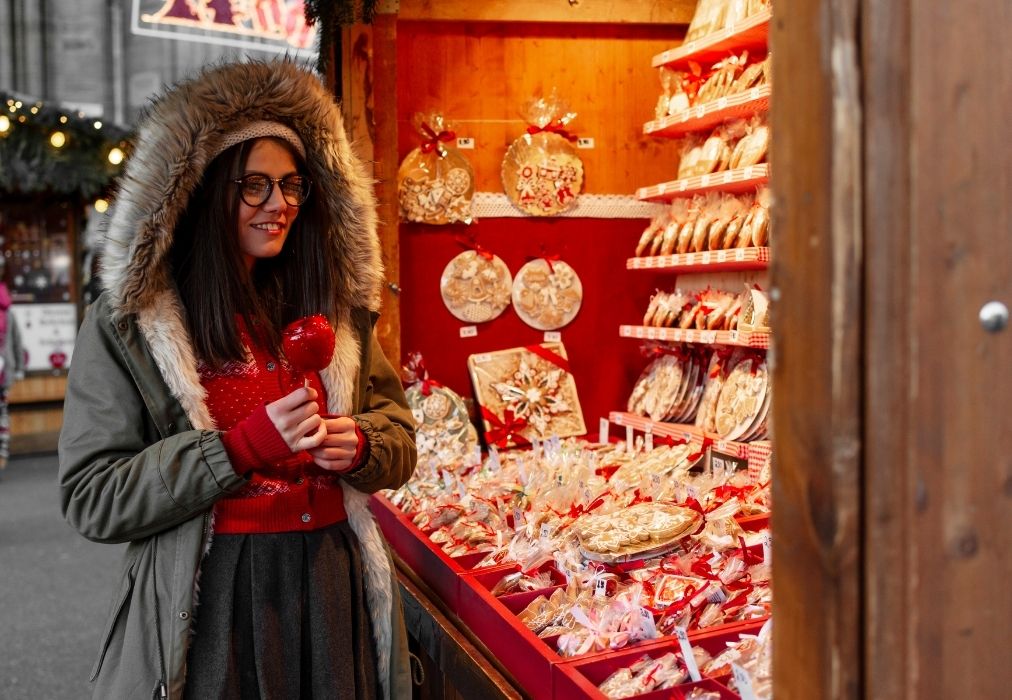
When we conducted our first Solo Female Travel Survey, one of the most relevant take-aways was that women who travel solo unanimously worry about their personal safety.
The best countries for first time solo female travelers all have safety in common. That’s why we created the first and most complete resource for women who travel solo to find safety information by country or destination.
With safety data coming from the US and UK Travel Advisories and the Global Peace Index, the index considers factors like the risk of theft, scam and harassment, as well as analyzing attitudes towards women in each country to rank each country from 1-4, 1 being the safest and 4 being the most dangerous for solo female travelers.
Austria is currently rated as one of the safest destinations for solo female travelers on our safety index. Exercise regular caution and review our safety tips for solo female travelers to ensure you stay safe and have an empowering travel experience. Of course, incidents of petty crime, such as pickpocketing or theft, happen as they could anywhere.
Always keep your valuables safe and your bag in the front and zipped. Slash and theft proof cross-body bags like the ones we listed on this article are a great idea, and in crowded areas, keep your arm on your bag’s zipper for extra protection.
You can read our full article on safety tips here.
If you want to know how to stay safe and prevent a negative experience or encounter on your travels, you can check out EMPOWERFUL, a series of 35+ sessions, 40+ experts and over 50+ hours of learning via masterclasses, panel discussions, and inspiring interviews to empower YOU to travel solo!
Getting to and around Austria
Austria is very well connected internally and with the rest of Europe, so there are endless ways for you to get to and around Austria depending on the amount of time you have and your travel style.
Getting to Austria
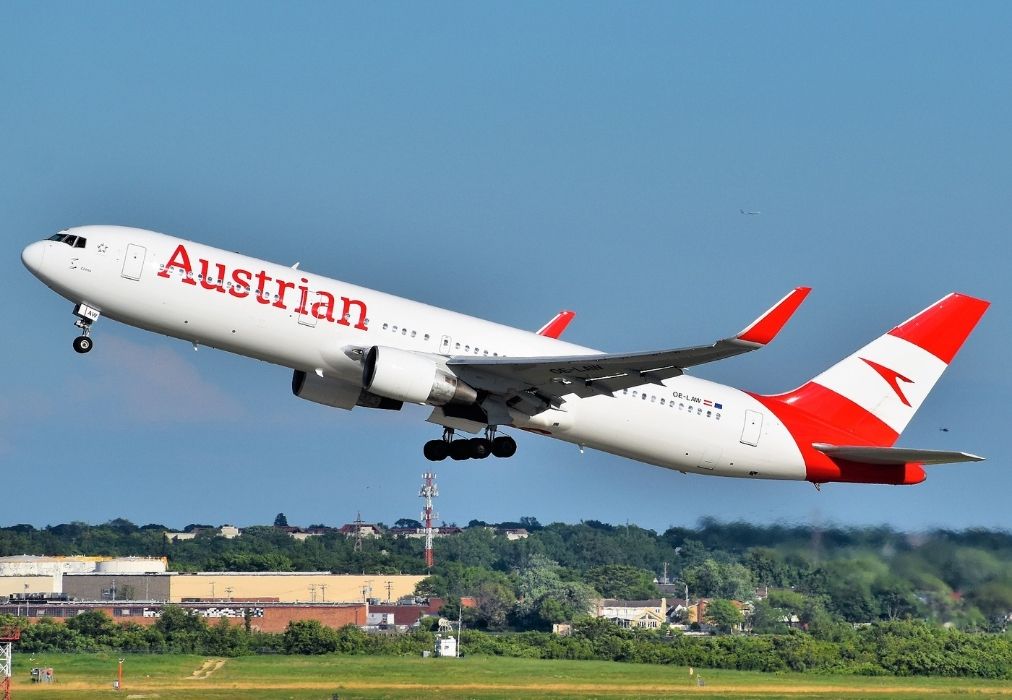
If you are traveling to Austria from a different continent, flying is going to be the easiest (or potentially only) option.
Austria’s main carrier Austrian Airlines, and many other large airlines will at least fly into Vienna from a multitude of international airports around the world, and select airlines will fly to other locations such as Salzburg, Graz, Linz or Innsbruck.
Alternatively, Europe is extremely well connected by high-speed train, and no matter where you are, you can get to Austria using the ÖBB-Austrian Railways or a Eurail/Interrail pass.
IMPORTANT: The Eurail pass can be an easy and cost effective way to get around Europe and Austria but in the peak seasons, it can be hard to make last minute seat reservations, which is an additional requirement on most high-speed trains. Booking in advance is super important to take advantage of everything the Eurail pass has to offer.
A budget friendly option is to take a bus like Flixbus which connects Austria to other neighboring countries, and thanks to free movement within the Schengen Area, it’s one of the easiest options too.
Last but not least, renting a car and driving into Austria from a neighboring country is an easy and fast way to get to Austria.
Getting around Austria
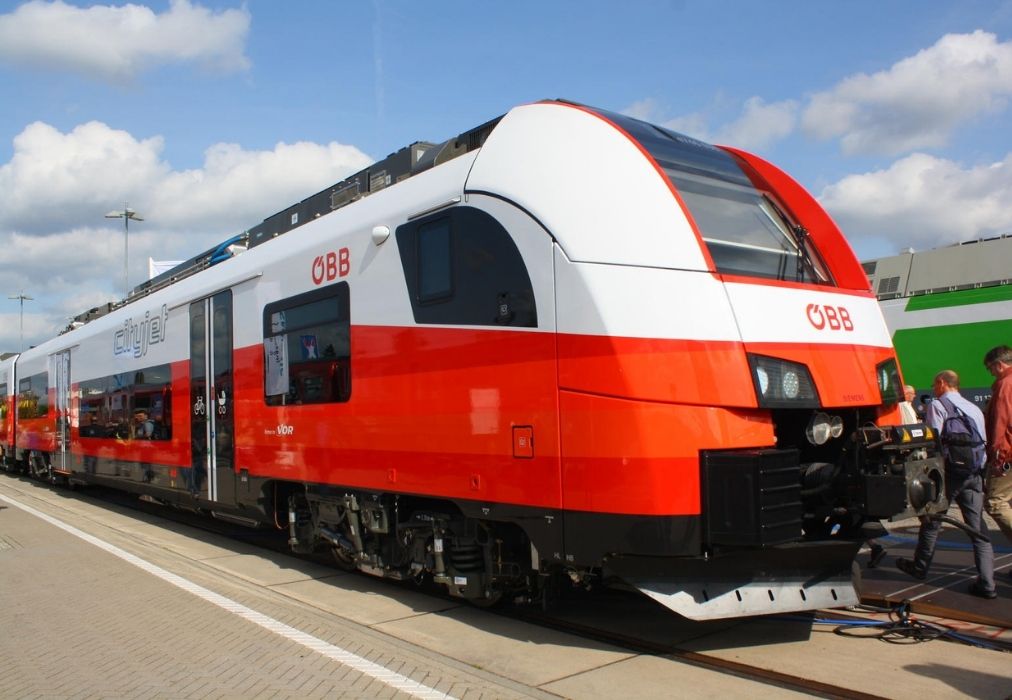
Getting around Austria is very easy and there are tons of options for you to get from point A to point B based on your timeframe and lifestyle.
Domestic flight options with national carrier Austrian Airlines are available, and while flying might make sense to get from Innsbruck to Vienna, for example, it’s usually quicker, cheaper and more convenient to go from city to city by train, not to mention, better for the environment too.
ÖBB-Austrian Railways connects the entire country with long distance, high-speed trains, and the Eurail/Interrail pass is the suggested pass to have while traveling Austria by train.
While renting a car or taking a Flixbus to drive around Austria is of course an option, a unique and memorable way to get around Austria is by taking a river cruise.
The Danube River goes along some of Austria’s iconic cities like Vienna and Linz, and Viking River Cruises or Emerald Cruises have a variety of trip durations, styles and itineraries for you.
How many days to spend in Austria
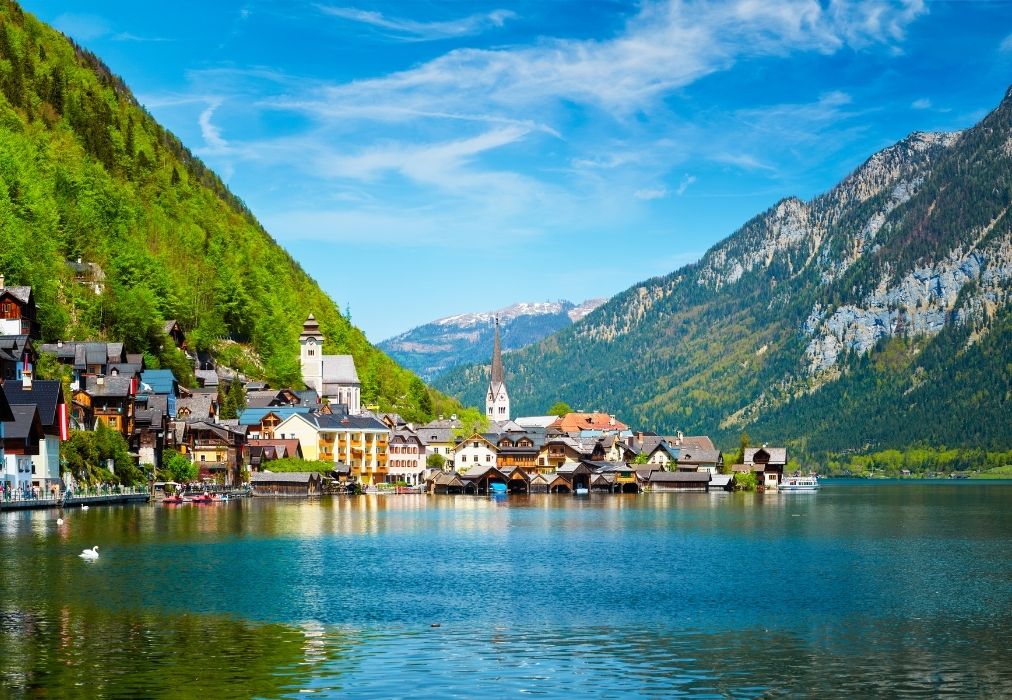
How long you should spend in Austria depends on what type of activities you want to do, and your style of travel.
For a city break to see one of the major cities like Vienna, Salzburg or Hallstatt and explore the nearby region, you’d need at the very least 3 or 4 full days. This will give you enough time to get a quick taste of the history, culture and cuisines in each city and visit some of the museums, with maybe a one day trip to a nearby interesting place.
A week would give you the opportunity to visit two or maybe three cities and immerse yourself in some of the outdoor activities Austria has to offer, while with two weeks exploring Austria, you’d be able to experience a good mix of the major cities and smaller towns like Erhwald and Zell am See.
Top places to see and things to do in Austria
Speaking of all the things you could do with a few weeks in Austria, here’s a few places you have to go to on your trip to Austria:
Wein (Vienna)
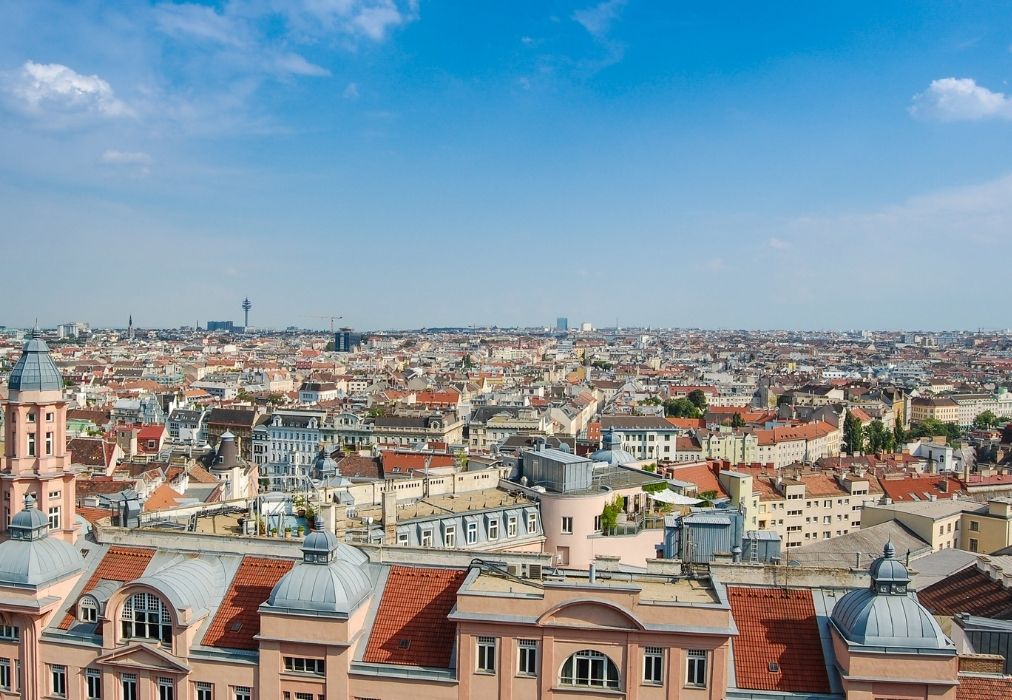
Becoming the capital of the Austrian empire in 1804, Vienna saw the reign of a multitude of Emperors, Kings and Dukes, and this can be seen through the city’s stunning architecture especially in the historic center which is listed as a UNESCO World Heritage Site.
Visit the Schönbrunn Palace, the Hofburg Palace, and St. Stephen’s Cathedral, and marvel in the arts and culture that bloomed in this city at the Vienna State Opera or Theater an der Wien, the first public opera house opened in 1869.
Vienna comes alive in December, with Christmas markets like the Christkindlmarkt at Rathausplatz and others popping up all over the city. Enjoy some hot chocolate or glühwein (mulled wine) and toast to all the festivities.
Salzburg
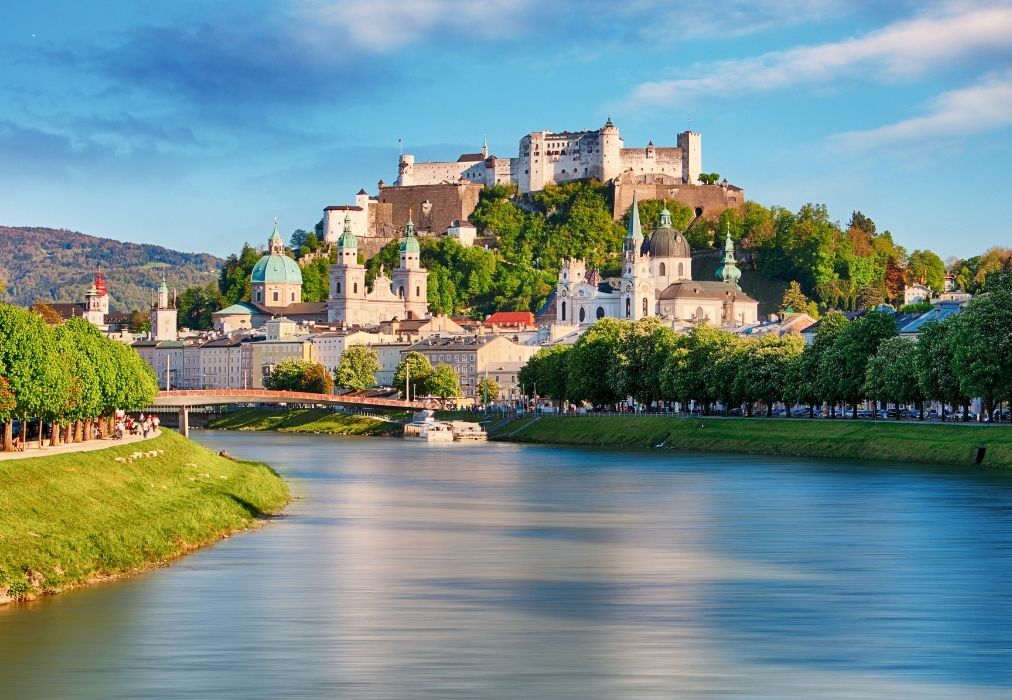
Salzburg is alive with the sound of music.
This picturesque city is known for serving as the backdrop for the famous 1965 musical “The Sound of Music” and for being the birthplace of Wolfgang Amadeus Mozart and Stiegl beer.
Explore the UNESCO World Heritage Site Salzburg Old Town (Altstadt), Hellbrunn Palace and the Hohensalzburg Fortress for panoramic views of the city before touring Mozart’s home, or going on a “Sound of Music” tour.
Innsbruck
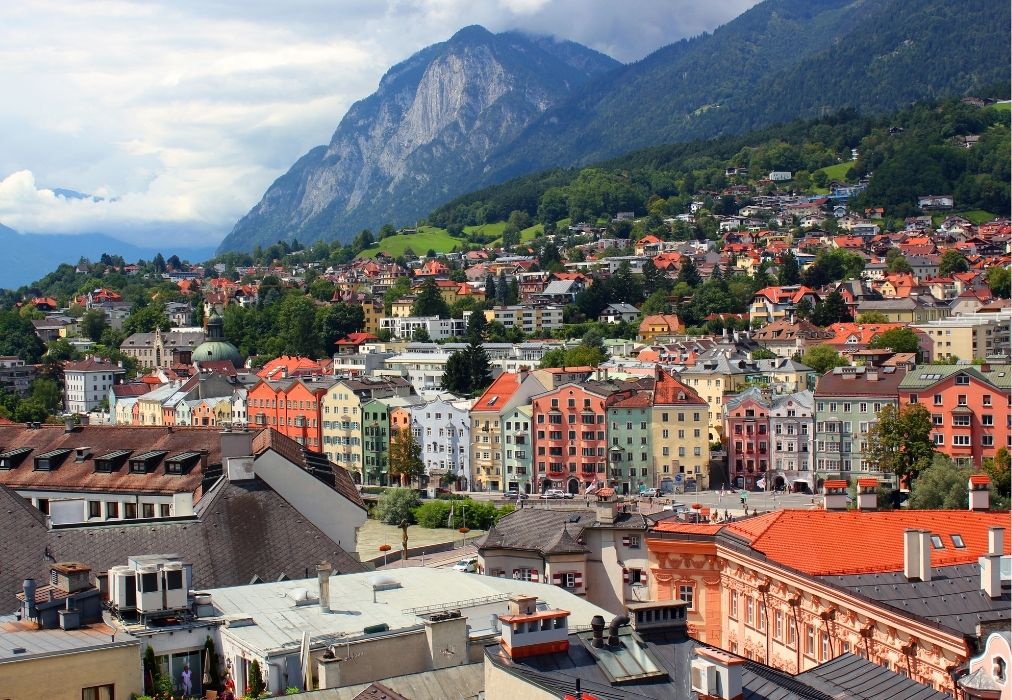
This alpine town in the Tyrol region ranks among the most beautiful towns in Austria, and is a hub for winter sports with 13 ski resorts nearby and the Nordkette Cable Car even taking you right to the slopes from the center of the city.
After your jam-packed day of skiing and snowboarding in the winter, or hiking in the summer, make sure to explore the Old Town and through Maria-Theresien-Strasse, which also sees the pop up of Christmas markets come the holidays.
Hallstatt
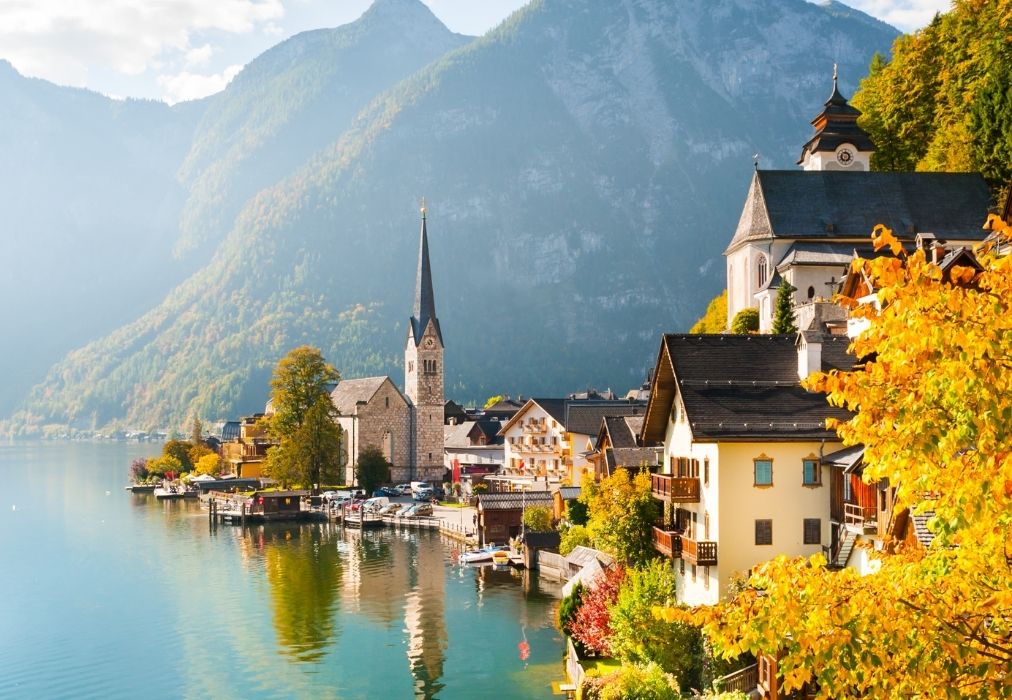
Perhaps one of, if not THE most photographed towns in Austria, Hallstatt features charming Austrian architecture reflecting on Lake Hallstatt, and some of the coziest romantic vibes in the country.
Take it easy in Hallstatt and wander the quaint streets of Old Town and the market square (a UNESCO World Heritage Site), or relax in one of the town’s many lakeside parks.
Experiencing panoramic views of Hallstatt from the SkyWalk, and understanding this town’s history at the Hallstatt Museum are also musts on a trip to Hallstatt.
For something quite unique, take the journey up and underground at the Salzwelten salt mines that are the oldest in the world. The tour takes you through the many levels deep inside the mountain, through tunnels, trains and even toboggans.
Graz
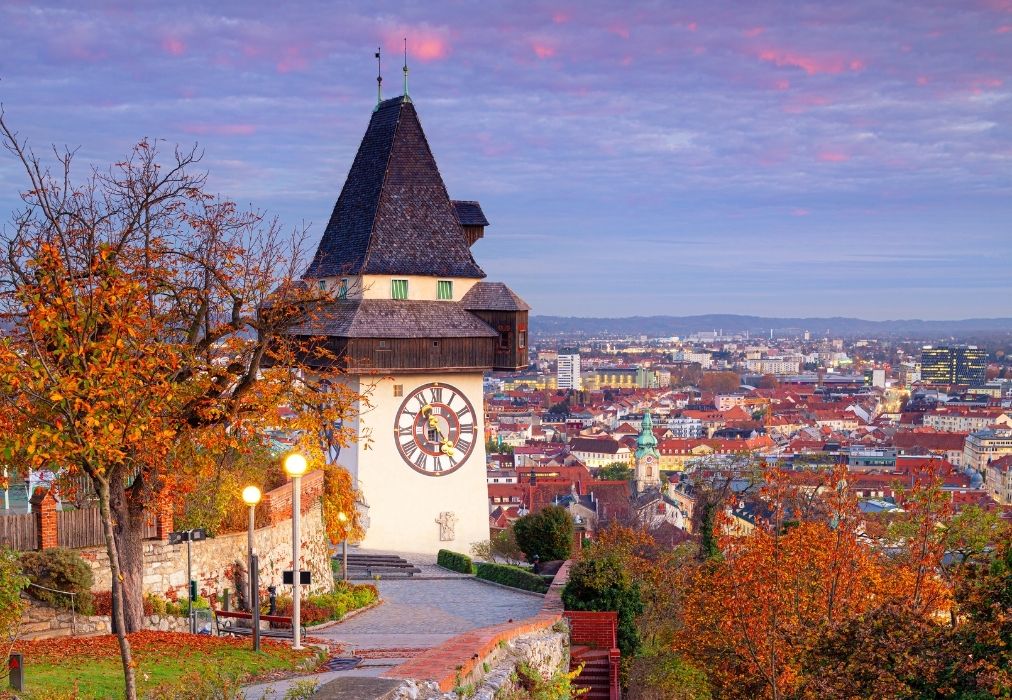
Known as “Austria’s culinary capital”, Graz seamlessly integrates Renaissance, Baroque and modern architecture styles and is Austria’s second largest city.
Are you noticing a pattern? No matter where you are in Austria, one of the main attractions is just getting lost in the city or town’s UNESCO-listed Old Town.
In addition to that, you have to take a stroll up Schlossberg hill, explore Eggenberg Palace, and go to the modern art museum Kunsthaus Graz. Don’t forget to take a food tour to see why Graz is called the culinary capital.
Linz
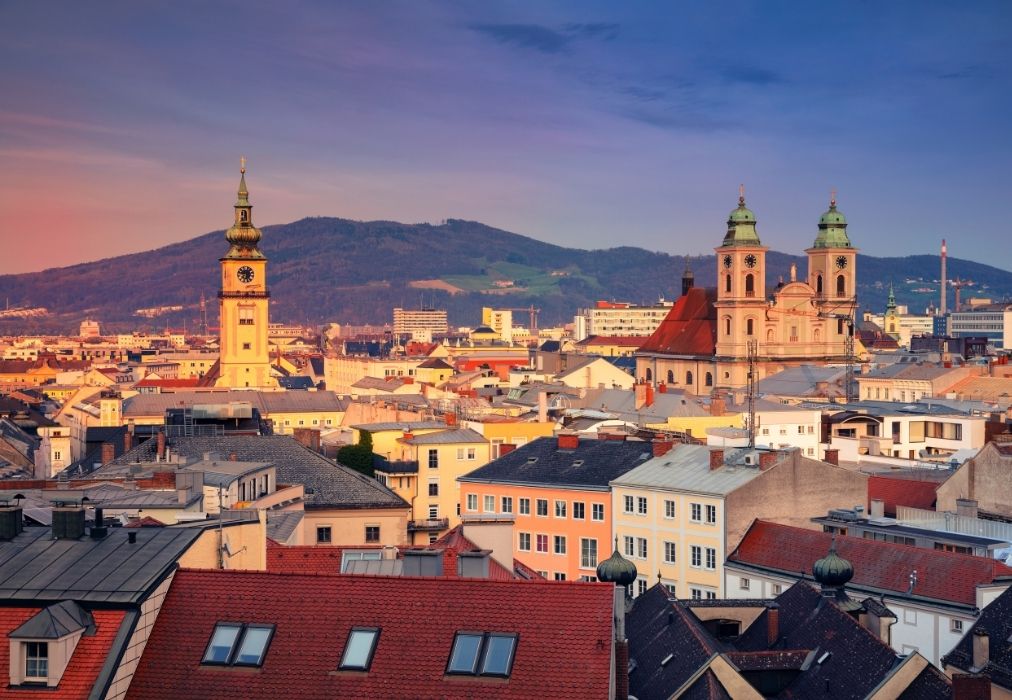
Nestled right on the Danube River, Linz is the capital city of Upper Austria and is the 3rd largest city in the country.
Its Baroque style architecture and historical charm like showcased at Linz Castle (Linzer Schloss) and the Old Town, is balanced with the modern and futuristic ideals of this city, featuring one of Europe’s biggest graffiti galleries at Mural Harbor Gallery, the Lentos Art Museum, or the Ars Electronica Center, named the “Museum of the Future”.
Krems and the Wachau Valley
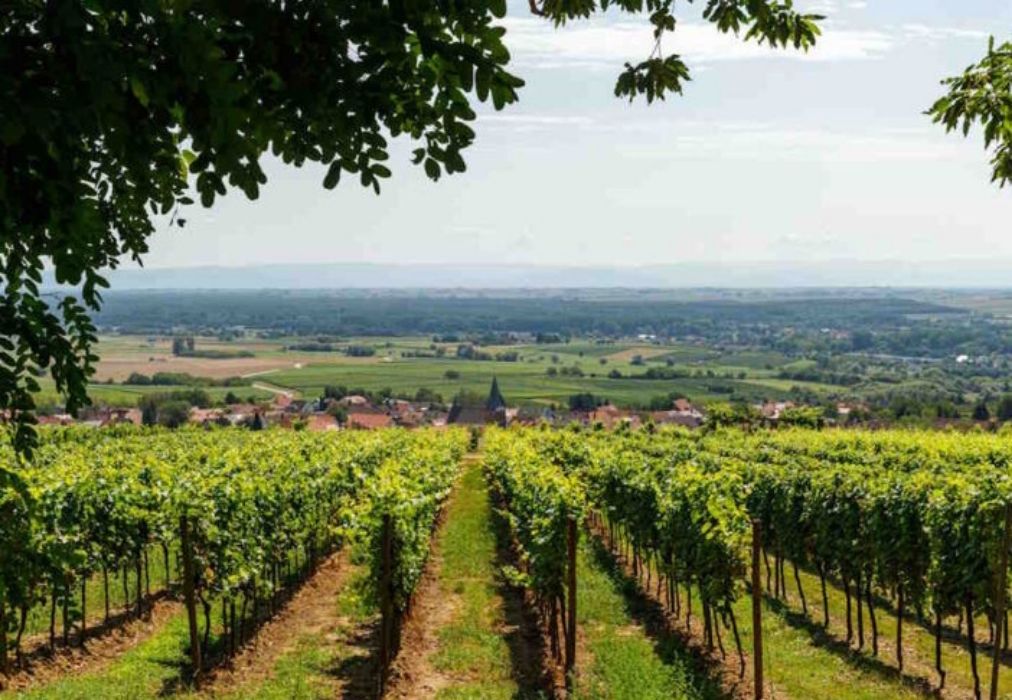
Yet another UNESCO World Heritage Site, Lower Austria’s Wachau Valley is famous for its stunning natural landscapes, history and sprawling vineyards.
Explore Krems’ medieval Steiner Tor or the gothic Krems Cathedral, before venturing into the Valley, and tasting the delicious Grüner Veltliner and Riesling wines of this region at Weingut F.X. Pichler or Weingut Knoll.
Ehrwald
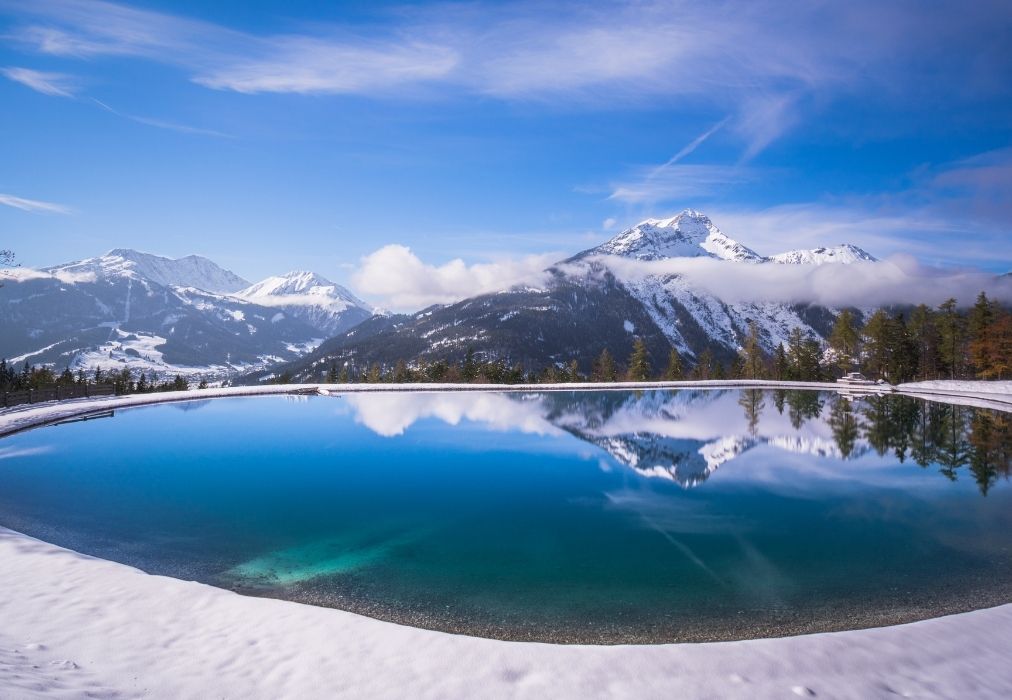
This quaint small town towered over by Germany’s Zugspitze Mountain, offers a chance for visitors to slow down and enjoy the Tyrol region’s natural wonders.
Take a cable car or the cogwheel train up Germany’s highest peak for panoramic views of Austria and Germany, and take the opportunity to ski, snowboard the slopes of Ehrwalder Wettersteinbahnen on Mount Zugspitze.
In the summer, make sure to relax with a picnic and take a dip in Lake Blindsee. We promise the lake doesn’t make you go blind, maybe just by its beauty.
Zell am See
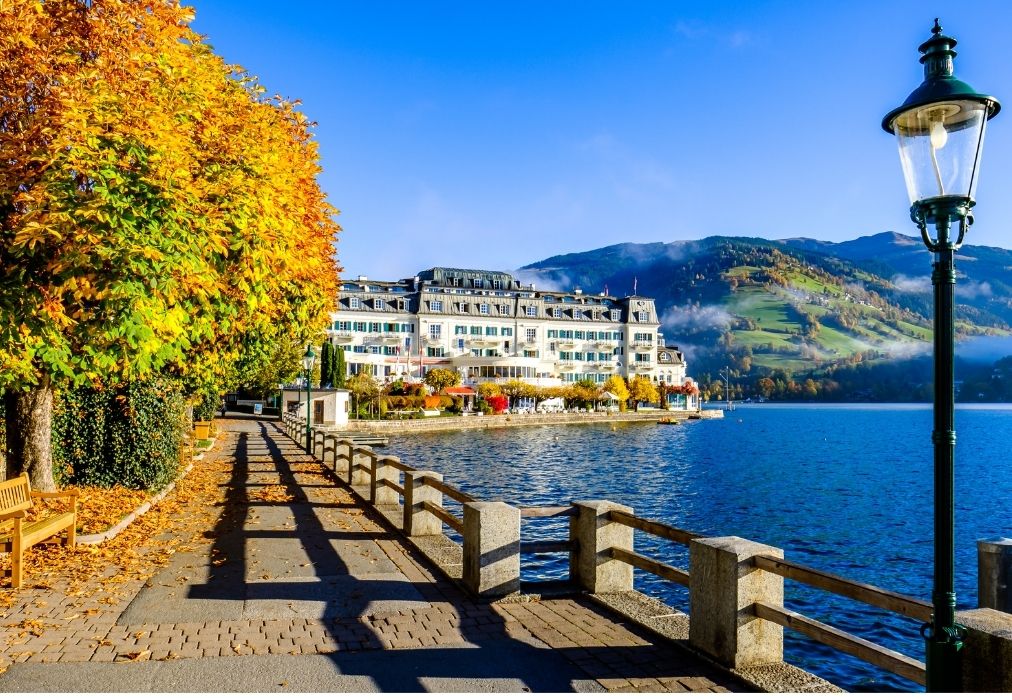
Like Ehrwald, Zell am See offers a charming Old Town, with a wonderland of skiing, snowboarding and lake ice skating opportunities in the winter, and hiking trails and lake swimming in the summer.
Enjoy skiing opportunities year-round on the Kitzsteinhorn Glacier in nearby Kaprun, or bask in the glory of Europe’s tallest waterfall, the Krimmel Waterfall.
Travel essentials for Austria
In this section we will look at a range of other things to consider when traveling to Austria as a solo female traveler.
Money and currency
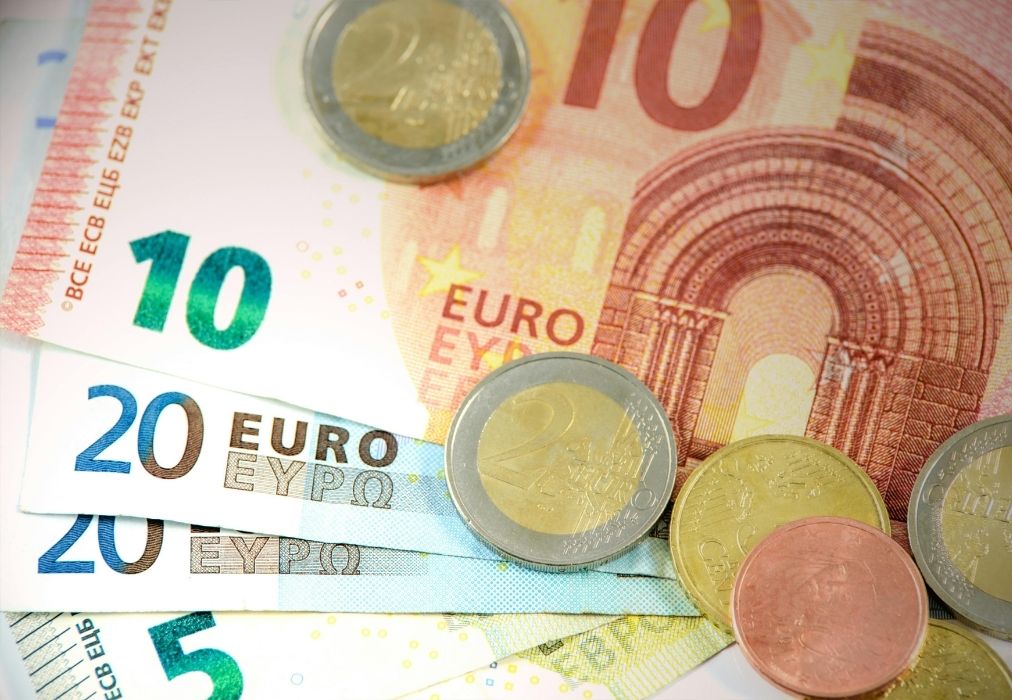
Austria uses the euro (€), which makes travel through Europe and Austria a lot more convenient thanks to the European Union. You can find bills of €5, €10, €20, €50 and €100 bank notes.
Currency exchange services are available at airports, banks, exchange bureaus, and some hotels. However, be aware that these services often charge fees or offer less favorable exchange rates, so it’s smarter to compare rates and fees before exchanging money.
ATMs: ATMs are widely available throughout Austria, especially in urban areas and tourist destinations and are actually quite important as despite the COVID-19 pandemic encouraging contactless payments around the world, the country surprisingly still favors cash and credit cards are not accepted in many shops or for smaller purchases.
Most ATMs will accept major international credit and debit cards, but make sure to inform your bank of your travel plans beforehand to avoid any issues with your card and be left stranded without cash.
Keep in mind that some ATMs may charge a fee for withdrawals, and it’s a good idea to withdraw larger amounts less frequently to minimize fees.
Pro tip: Avoid ATM machines that are standalone and not attached to a bank like Euronet. These charge exorbitant fees and give an extremely poor exchange rate, as they are an exclusive ATM business. Additionally, if your card gets taken, it is much harder to retrieve it than from a bank.
Credit cards: Credit cards are not accepted in many smaller convenience stores, at the Christmas market stalls and for smaller purchases. When they are, major ones such as Visa and Mastercard will do. Contactless payment methods, such as Apple Pay and Google Pay, are not common.
Tipping culture: Tipping in Austria is generally not expected, but it’s customary to round up your bill or add a small tip around 5-10% if you get table service at restaurants, bars or cafés.
Local culture and customs
There are a lot of stereotypes when it comes to the way things go in Austria and in this section we wanted to dispel some myths.
Punctuality: If you’re not early in Austria, you’re late. Being on time is a big sign of respect in Austrian culture, so from appointments or meetings to even hanging out with a friend, you should try to be on time or plan in advance if you are usually a tardy person.
Formality: Austrian culture is generally formal, and a handshake should be your go-to greeting, unless they greet you otherwise.
In the German language, they have formal conjugation and informal conjugation, and formal conjugation and titles are used as a sign of respect until invited to use informal language.
Because of this, you should use titles and last names in formal settings until invited to use their first name as well. This is less likely in casual friendly settings, where they will just introduce themselves by their first name.
Rules and Structure: Austrians are very cautious about following the rules, and even something as small as jaywalking is very frowned upon. It is a sign of respect to follow the rules by following traffic laws or purchasing your train or bus fare.
Bureaucracy: Austria’s bureaucratic procedures are extremely meticulous and organized, but often involve a lot of paperwork. It’s important to give yourself enough time to meet all requirements and fill out all forms for any applications, as these processes can be quite time consuming.
Communication: Many would assume that Austria would share the same honest and direct communication style that the Germans have, but Austrians are more polite and slightly less direct. Using a warm tone, and saying “please” and “thank you” will get you far in Austria.
Small talk is also not only allowed, but encouraged at the beginning of any conversation, and jumping right into things might even be considered rude in Austria.
Environmental Priorities: Austria is a global leader in their environmental efforts, and meticulous recycling and waste separation practices will be expected and often enforced anywhere you go in the country.
Public transportation is also very developed, accessible and convenient, and a much more sustainable option. Show respect for Austrian values and culture and challenge yourself to cut down your carbon and environmental footprint!
Basic Austrian-German words to know

German is a great language to get the hang of while traveling through Central Europe, as it is spoken as an official language in Austria, Germany, Switzerland, Liechtenstein, Luxembourg and Belgium.
Of course there are regional differences and dialects, but for the most part you’ll be able to get by with a basic understanding of the language.
Here’s a good starting point to help you get by in German-speaking countries:
- Hallo – Hello (In Austria, you’ll also hear locals saying “Servus” (“sair-voose”) or “Grüß Gott” (groose got) to say hello, as well.)
- Guten Morgen (“goo-ten mohr-ghen”) – Good morning
- Guten Tag (“goo-ten tahk) – Good day/afternoon (“Grüß Gott” (groose got) meaning “May God greet you”, is also a popular greeting during the day)
- Gute Nacht (“goo-ten nahkt”) – Good night
- Tschüss (“choose”) – Bye (Again, in Austria or Southern Germany, locals will say Servus (“sair-voose”) or even “Baba” (like bye-bye) to say goodbye)
- Auf Wiedersehen (“auv-veeder-sen”) – A more formal Goodbye
- Ja (“Ya”) – Yes
- Nein (“Nine”) – No
- Danke (“dahn-kuh”) – Thank you! (you’ll also hear “Vergelt’s Gott” in more traditional or rural areas, meaning “May God reward you”)
- Danke schön (“dahn-kuh shurn”) – Thank you very much!
- Bitte (“bi-tuh”) – Please and/or You’re welcome, depending on context. (Bitte Schön (“bi-tuh shurn”) – more polite or warm version, like “my pleasure”)
- Prost! (“prohst”) – Cheers!
- Ich verstehe nicht (“ikh fer-shtay-uh nikht”) – I don’t understand
- Sprechen Sie Englisch? (“shprekh-en zee eng-lish”) – Do you speak English?
- Wie viel kostet das? (“vee feel koss-tet dahs”) – How much does it cost?
- Wo ist die Toilette? (“vo ist dee toy-let-uh”) – Where is the toilet?
- Ich hätte gerne… (“ikh het-tuh gair-nuh…”) – I would like…
NOTE: “W” in the German language is pronounced like an English “V”, so make sure to say “Vo” and not “Wo” to ask “where” something might be, etc.
Important women in Austria’s history
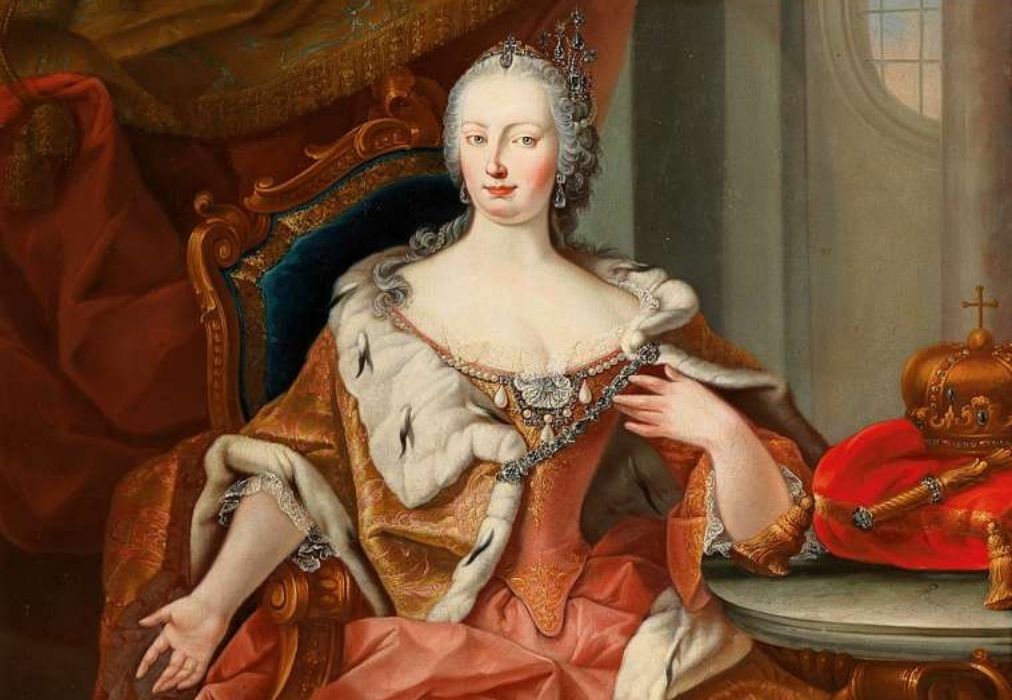
Some very important and influential women have come out of Austria, changing the course of history. Here are a few names you should definitely know of before visiting the country:
Sophie von Hohenberg (1868–1914): Perhaps one of the most impactful deaths on humanity, Sophie and her husband’s, Archduke Franz Ferdinand, deaths triggered Austria to declare war with Serbia, causing World War 1.
Empress Elisabeth of Austria (1837-1898): Affectionately known as Sisi, she is Austria’s most famous regent. Wife of Emperor Franz Joseph, ruler of the Habsburg Empire and mother of Sophie von Hohenberg, she has gone down in history as an independent, free-spirited woman who rebelled against the duties of Court life and wanted to travel the world often on horseback, or by sailboat.
Maria von Trapp (1905–1987): The matriarchal inspiration behind the Trapp Family Singers and “The Sound of Music”, she helped to showcase Austrian culture internationally.
Bertha von Suttner (1843–1914): The first woman ever to win the Nobel Peace Prize in 1905 for her efforts promoting peace, and her anti-war novel “Lay Down Your Arms” released in 1889.
Lise Meitner (1878–1968): As a physicist, she contributed to some of the world’s most significant scientific findings, including that of the discovery of nuclear fission which would later be used for good in creating the cleanest energy source, nuclear energy, and for worse in the creation of the atomic bomb.
Maria Theresa (1717–1780): The first and only female ruler and Empress of the Habsburg Empire. She contributed positively to education, military and political reform, and navigated several wars, including the War of Austrian Succession from 1740-1748, the Hungarian Rebellions throughout the 1740s and 50s, and the Seven Years’ War from 1756-1763.
Local Cuisine
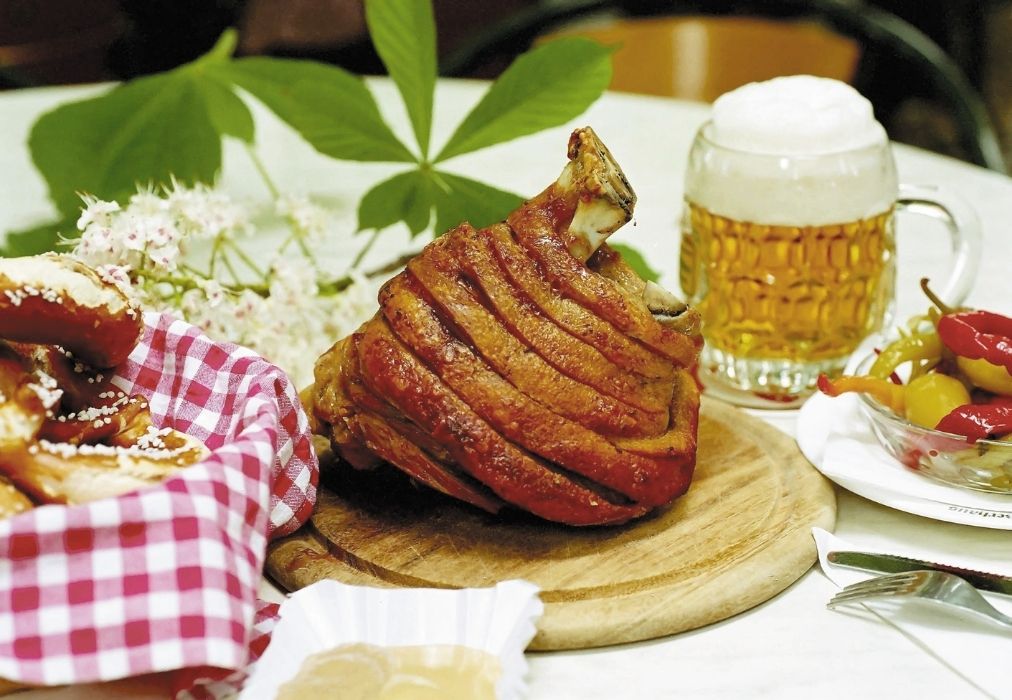
Local cuisine is a staple part of enjoying the culture on your trip to Austria.
When eating in Austria you should expect lots of protein (especially meat), bread and potatoes, making meals a little heavy, heart-warming and comforting, especially in the winter.
Breakfast on the other hand tends to be quite light with a bread roll, some cold cuts and cheese and spreads like butter or jam being quite standard to get your day started.
Best Austrian Foods to try
Here’s a few dishes you have to try on your visit to Austria:
- Wiener Schnitzel: A classic Austrian dish, schnitzel is a thin and breaded fried meat (usually pork, veal or chicken) served crispy and crunchy.

- Wiener (Vienna Sausage): One of the most popular Austrian delicacies is the wiener, usually made with a mix of pork and beef, that is smoked and served with either mustard, sauerkraut, horseradish or a bun!

- Gröstl: THE Austrian comfort meal, Gröstl is a pan-fried potato usually with onions, and leftover meat, or even bacon, all topped with an egg. It’s very typical in the alpine regions after a long day of skiing.
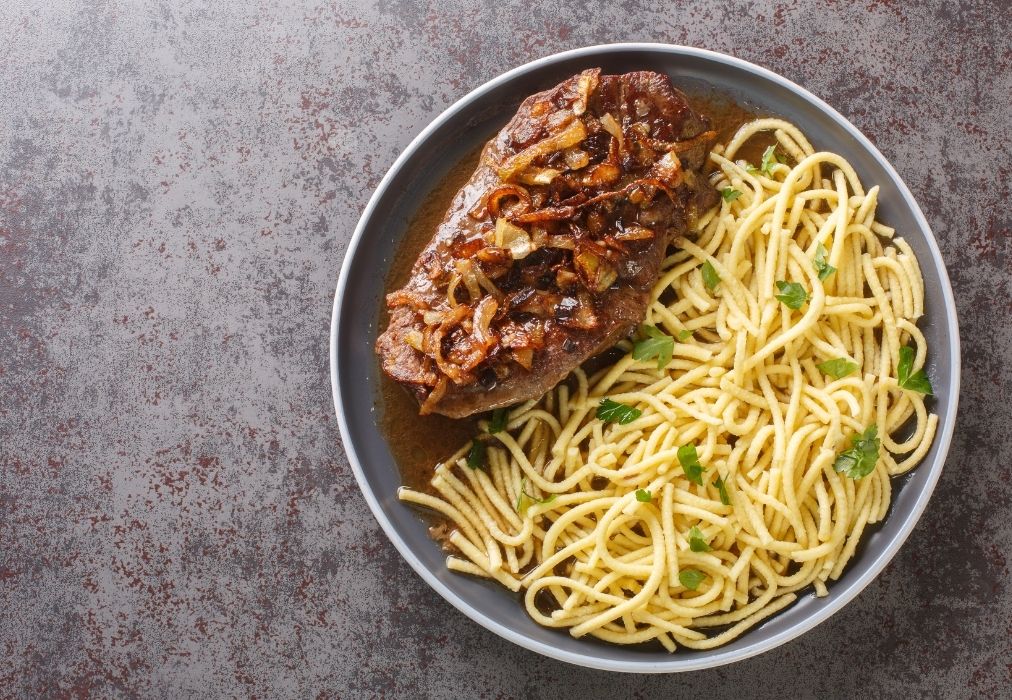
- Zwiebelrostbraten: Directly translating to “roast beef with onions”, this beef dish is served with crispy caramelized onions, and potatoes or spaetzle (a chewy egg noodle/dumpling base).
- Gulasch: As a comfort food classic, Goulash is a hearty and slow cooked stew served with potatoes or bread (sometimes even served in a bread bowl).
- Tafelspitz: Boiled beef is simmered until tender and served with minced apples, roasted potatoes and horseradish.

- Käsespätzle: Essentially Austrian mac & cheese, made with homemade egg noodles and layers with lots of cheese that gets oven-baked and melted.
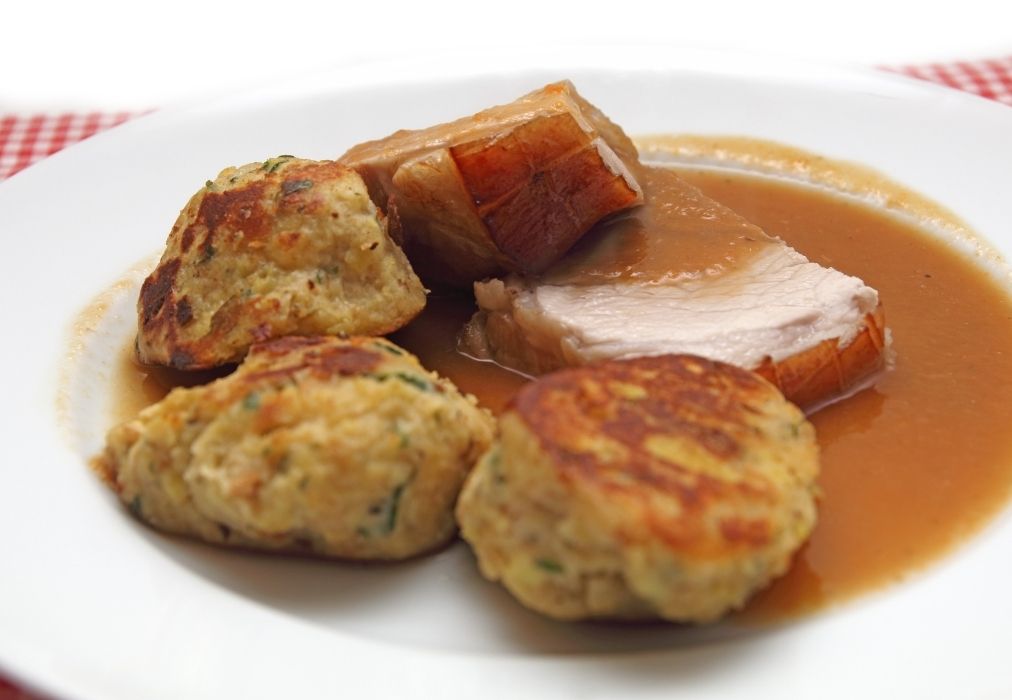
- Knödel: Classic Austrian and Bavarian potato or bread dumplings that are a great side for any protein, and the perfect vessel to sop up any sauces, stews, or gravy.

- Frittatensuppe: Called “pancake soup”, this unique soup is sliced pancakes, or Palatschinken, in a typically beef-based broth.
- Rindsrouladen: Rolled up beef is stuffed with pickled vegetables, onions and bacon, and served drenched in gravy with some bread.
Best Austrian Desserts to try
Austrians love their sweets, and proven by the fact that pastries are often referred to as Viennoiserie by the French.
Besides pastries, there is a wide selection of desserts that you should try on your trip to Austria:
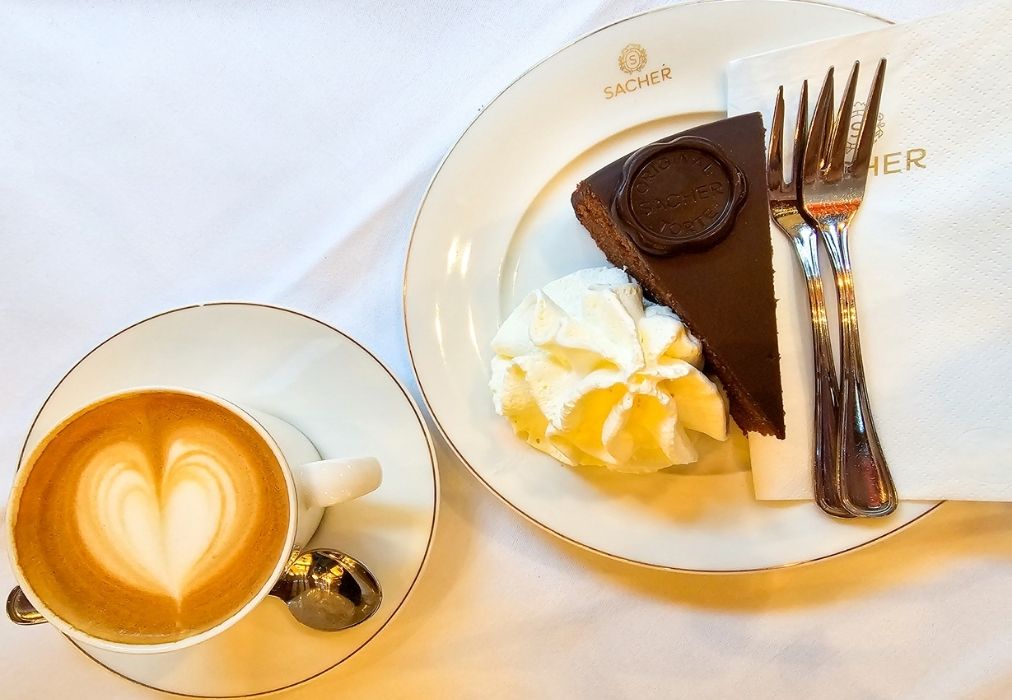
- Sachertorte: Sachertorte is one of the most delicious types of chocolate cake you will ever have, and is layered with an apricot jam and coated with a chocolate glaze. Invented in 1832 by Franz Sacher, of the hotel of the same name, it has been a classic ever since and the queues to try at the original cafe in Vienna can be longer than an hour, even in the freezing winter weather.
- Apfelstrudel: Arguably the most iconic Austrian dessert, the Austrian apple strudel is a flaky pastry filled with apples and spices, baked to flaky perfection and sprinkled with sugar.
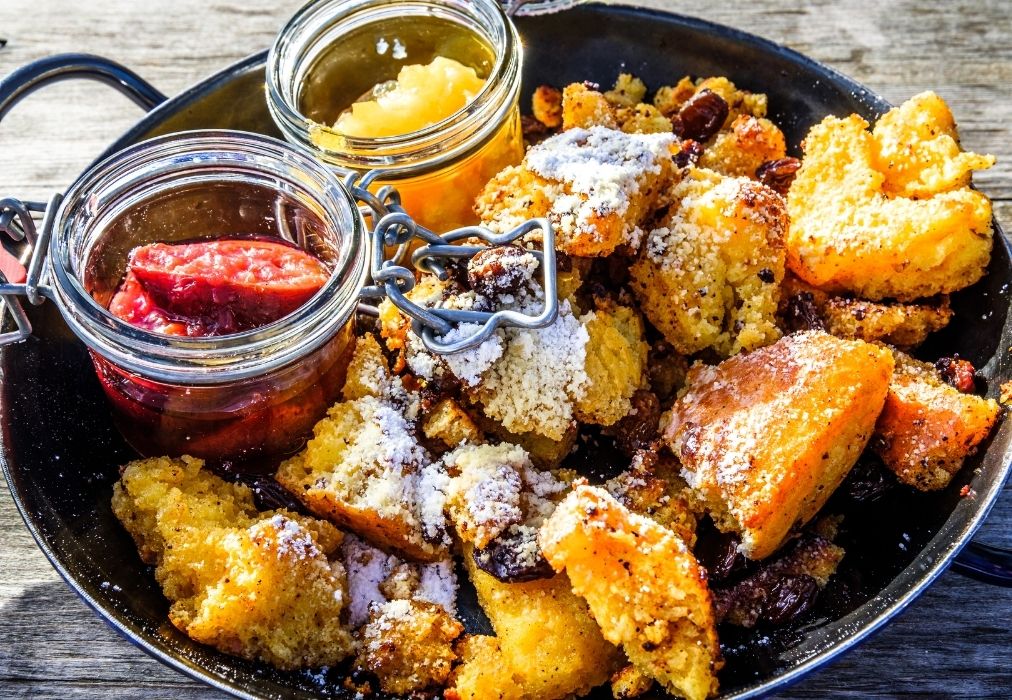
- Kaiserschmarrn: This fluffy, shredded or scrambled pancake hits the spot, served with a variety of jams or fruit compotes, and topped with a dusting of powdered sugar.
- Kardinalschnitten: A light and fresh option, this meringue dessert is layered with custard, whipped cream and lots of fresh fruits like raspberries or strawberries.

- Marillenknödel: These apricot-filled dumplings are almost like donuts, and they are typically rolled in breadcrumbs and powdered sugar to add some sweet crunch. The idea of this dish is also executed in a beautiful cake form called Marillenkuchen.
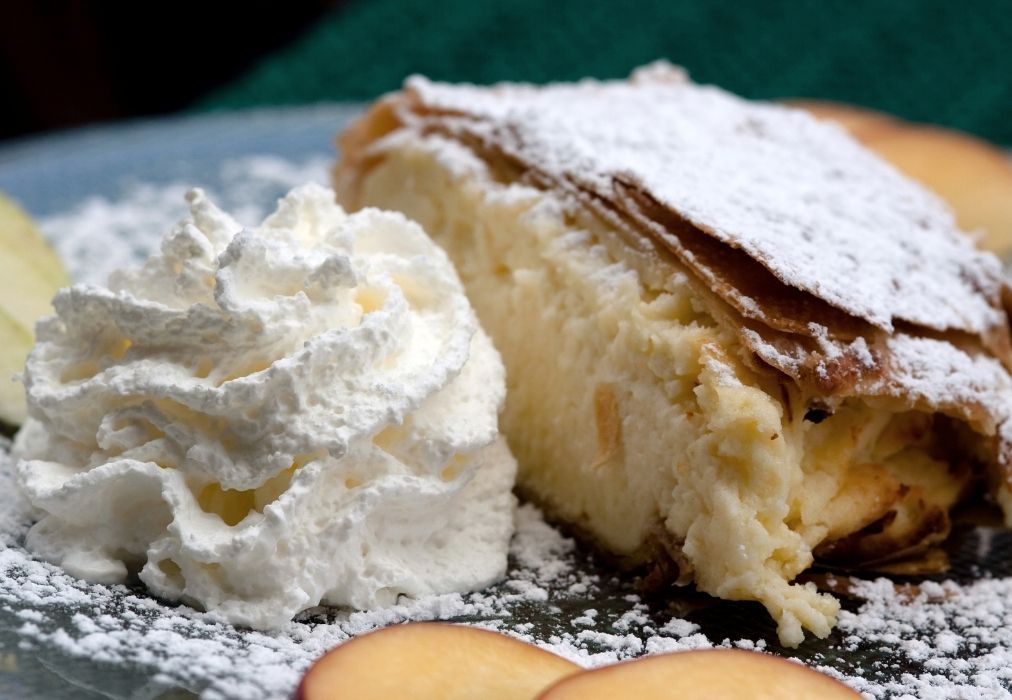
- Topfenstrudel: A quark strudel, or cheese strudel, is a type of strudel that is typically also filled with raisins or seasonal fruits.
- Buchteln: A basic but delicious jam-filled yeast bun, normally served with a yummy vanilla sauce.

- Linzer Torte: Named after the city Linz, this shortbread torte is filled with fruit preserves and nuts, and has the most gorgeous and satisfying lattice pattern pastry on top.

- Viennese Silk Candies: One of, if not the most, traditional candies in Austria, and get their name from the silky look that pulled sugar gets in the candy making process.
- Mozarttorte: This complex cake is named after the famous composer himself, and features layers of chocolate cream, marzipan, pistachio cream and nougat.
Best Austrian drinks to try
It would be impossible to go to Austria without trying one of these iconic Austrian beverages:
Beer
Ausrians love their beer as much as the Swiss or Germans, and the culture of beer gardens and pubs is prevalent.
From the oktoberfest traditional Märzen beer to Pilsners, or a Vienna Lager, you have to try Austria’s iconic Steigl and Gösser beers to explore the country’s strong beer culture.
Wine
Austria is also known for its wines, and boasts some gorgeous wine regions for visitors and locals alike to explore.
From the Wachau Valley, famous for producing the crisp white Grüner Veltliner and the sweet Riesling, to the Burgenland region and its love for Zweigelt and Blaufränkisch, the wine in Austria is a crucial part to a gastronomical experience in Austria.
For something bubbly, Sekt is Austria and Germany’s sparkling wine, and just like champagne or prosecco, you can find a varietal to your tastes from super dry to very sweet.
Schnapps

Schnapps is a very popular Austrian export, and has a long and rich history in Austria and Germany, dating all the way back to medieval times when it was used for medicinal purposes.
With the intense and snappy flavor that can be found in schnapps, this fermented and distilled liqueur got its name from the German word “schnappen” which means “to snap”.
Beginning mostly in rural areas of Austria as a way to make use of the surplus of fruits come harvest season, schnapps is now closely tied with Austrian culture and sipped slowly as a digestif or aperitif.
From fun and fruity flavors of nearly every fruit under the sun, to interesting and unique options like “Tafelspitzschnaps” with a hint of meat flavor, or Zirbenschnaps made with pine cones, you have to try schnapps or go on a schnapps tour when you’re in Austria!
Other drinks to try in Austria
There are a few other drinks you should try on your trip to Austria.
- Coffee: Austria’s cafe culture is huge, and you have to indulge in a coffee or two while in the country. Order a “Wiener Melange” for a cappuccino-like cup, a “Kaffee Creme” for an americano, or a “Café Latte” for your classic latte.
- Almdudler: The perfect non-alcoholic summer drink, Almdudler is a refreshing blend of herbs and spices in a lemonade.
- Red Bull: The international go-to for energy drinks was actually created in Austria in 1987 inspired by the Thai energy drink, Krating Daeng. Since then, Red Bull is now sold in over 170 countries.
- Sturm: Almost ready to be a wine but not quite there, Sturm is a fermented grape juice enjoyed in Autumn with its own traditions and rituals. When drinking Sturm, it should only be drank with the left hand, and toasting is a big no-no, as it’s not yet a wine. Instead of saying “Prost”, Austrians will say “Mahlzeit” to say “enjoy your meal”.
- Gespritzter: Another Spring and Summer classic, is mixing white wine varietals with a sparkling water, for a bubbly and refreshing mix under the warm sun.
- Gluhwein (mulled wine): Picture yourself strolling through a dazzling christmas market in Vienna. Christmas decorations and local artisans line the streets in their stalls and children are ice skating while snow is falling, but there’s one thing missing – Gluhwein! This warm and comforting spiced wine hits the spot on any chilly winter day.
- Radler: If you don’t love the taste of beer, and when you do it’s fruity and sweet, you’ll love a radler. Beer is mixed with typically lemonade or juice, whereas a lemon-lime soda like Sprite or 7Up is the mix in Germany.
- Tipperl: Almost like a spritzer, this drink sees white wine, water and a raspberry lemonade all mixed together over ice for a delicious summer drink!
Austrian media and literature
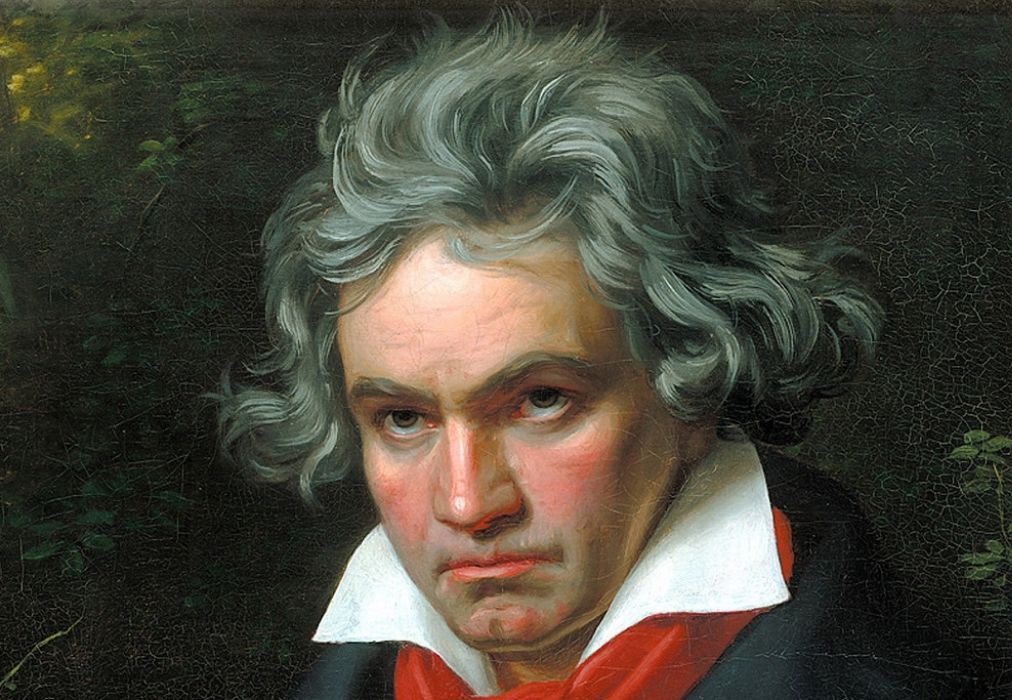
Austria is known for its rich arts and culture scene, and it’s no wonder some amazing media has come out of this country.
Below is a list of a few books you should read and movies or TV shows you should watch to better understand Austria’s history and culture.
Books based in or about Austria
There are many books that are set in the country or about it and below is our selection to get you prepared for a trip and better versed in the local culture:
- “The Last Train to London” by Meg Waite Clayton: This impactful historical novel tells the true story of the Kindertransport rescue mission, which ended up actually rescuing over 10,000 children from the Holocaust. The book reads Truus Wijsmuller’s efforts to smuggle out children in Nazi-occupied Vienna.
- “The Piano Teacher” by Elfriede Jelinek: Erika Kohut is a piano teacher in Vienna who navigates inner conflict and societal constraints, with themes of feminism, power, control and societal expectations.
- “The Austrians: A Thousand-Year Odyssey” by Gordon Brook-Shepherd: This book is the one-stop-shop to understanding every key moment in Austria’s history, from the country’s medieval period, to the rise and fall of the Austro-Hungarian Empire, and the country’s involvements in both World Wars.
- “Henry James’ Midnight Song” by Carol de Chellis Hill: With a mix of historical and fictional elements, this book explores the life of Henry James and his cultural and intellectual experiences in Vienna.
- “Stolen Beauty” by Laurie Lico Albanese: Set in both Vienna during World War II, and modern-day New York City, it follows the true story of a Jewish girl whose family painting, “Portrait of Adele Bloch-Bauer I” by Gustav Klimt, was stolen by the Nazi regime.
- “Beethoven: The Music and the Life” by Lewis Lockwood: One of the most in-depth biographies of legendary composer Ludvig van Beethoven, this book goes through his personal life and struggles, and the legacy he has left behind in classical music.
- “The Seven-Per-Cent Solution” by Nicholas Meyer: The iconic Sherlock Holmes meets Sigmund Freud in this historical mystery set in Vienna.
- “The Story of the Trapp Family Singers” by Maria von Trapp: Written by the matriarch of the Trapp Family Singers herself, this memoir dives into the lives of the Trapp family, their lives in Austria and their big move to America, setting the scene and the inspiration for “The Sound of Music”.
- “Hitler’s Vienna: A Dictator’s Apprenticeship” by Brigitte Hamann: This sobering book explores Austrian-born Adolf Hitler’s life in Vienna and how his experiences in Austria contributed to his social and political ideologies.
- “Ecstasy” by Mary Sharratt” A coming-of-age story of strong-willed Alma Muhler set in Vienna, exploring her influence on art, literature and music and feminist spirit.
Movies or TV shows based in or about Austria
Besides books, there are also many interesting movies set in Austria or about the country:
- The Sound of Music (1965): The most iconic piece of media to come out of Austria, the von Trapp family’s new governess, Maria, instills joy and music into the family’s lives as she falls in love with the children’s widowed father. As the Nazi regime begins to take control of Austria, Maria and the family find a way to escape to safety.
- Christmas in Vienna (2020): This Hallmark movie is sure to get you excited about visiting the magical Christmas markets that appear in Vienna every year, and follows violinist Jess Waters who rediscovers her love for music (and for her old friend Mark).
- Freud (2020): This Netflix-series Austrian-German crime drama, supernatural thriller depicts psychoanalyst Sigmund Freud as he becomes involved in a string of mysteries in Vienna in the 1880s.
- Vienna Blood (2019): Similar to Freud, this TV series is set in Vienna in the early 1900s, and sees a series of complex murders which involve Sigmund Freud once again in this crime drama during the Austro-Hungarian Empire.
- Before Sunrise (1995): Another classic Austrian romance, Before Sunrise is about an American traveler and a French student that meet on the train to Vienna and decide to spend the day together, wandering the romantic streets of Vienna and enjoy a fleeting “once in a lifetime” connection.
- Amadeus (1984): Amadeus is a biographic drama on the life of Wolfgang Amadeus Mozart, only the story is moved along by Mozart’s rival, Antonio Salieri, who experiences a complex emotional duology of jealousy and awe towards Mozart in 18th-century Vienna and the Habsburg rule.
- Woman of the Dead (2022): Another crime thriller series to come out of Austria follows Brünhilde Blum who, after discovering the murder of her husband, attempts to get retribution while uncovering dark secrets about her small alpine village.
- Sisi (2021): Exploring the life and exploration of self-identity of Empress Elisabeth of Austria, who went by Sisi, this series reveals the Emperor and her husband’s affairs, and her struggles as Empress within the Habsburg court during the 1850s and 60s.
- The Third Man (1949): Based on the book by Graham Greene, this film noir is set in post-war Vienna when American writer Holly Martins arrives to meet with his friend Harry, when he discovers that he has mysteriously passed away, setting Martins on an investigation to see what happened to his friend.
- James Bond: SPECTRE (2015): Bond’s investigations lead him to the Austrian Alps in an attempt to stop deadly SPECTRE organization.

